dual-use technology
description: technology that can be used for both civil and military purposes
47 results
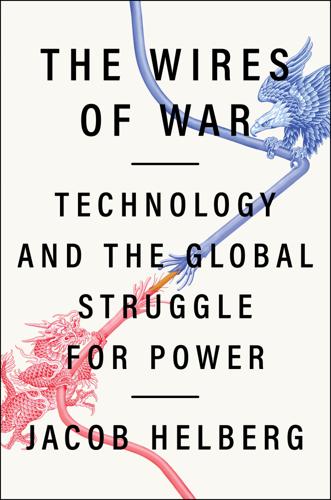
The Wires of War: Technology and the Global Struggle for Power
by
Jacob Helberg
Published 11 Oct 2021
But part of what makes this conflict unique—what makes it “gray”—is the extent to which its primary weapons are based on “dual-use” technology, commercial products that can be turned to military ends. The nature of dual-use systems is also what makes the growing rift between the Hill and the Valley so dangerous. It’s as if Raytheon were selling cutting-edge weapons to China and Russia—and the Pentagon had no idea. In fact, a bombshell 2017 Pentagon report revealed that Chinese companies had been involved in about 16 percent of all tech venture deals in 2015, part of an aggressive strategy of transferring dual-use technology to America’s competitors.82 Dual-use technology is not a new concept.
…
A nation armed with nothing but high-yield nuclear weapons would have no military means by which to impose its will upon another nation, aside from threatening it with total destruction.16 Conversely, commercial civilian dual-use technologies (artificial intelligence, or AI; 5G; drones) can be leveraged to carry out increasingly high-impact attacks against adversaries. When an aggressor uses dual-use technologies to carry out attacks against an adversary, they are often far harder to attribute than attacks carried out with more conventional weapons. The aggressor, therefore, often has the ability to deny its involvement in the attack and reduce the risks of a costly retaliation.
…
At the end of the day, China’s long-term aims are incompatible and irreconcilable with the United States’ vision of a rules-based liberal order. And as China exports its model of governance abroad, tensions with democracies will inevitably sharpen. In contrast to the primary arsenals of the U.S.-Soviet Cold War, this tech-fueled Gray War is primarily being fought with “dual-use” technologies developed by private companies and for civilian purposes. The reason has to do with the inverse relationship between the degree of destructiveness of technology and its rational usability. As Hans Morgenthau once observed: High-yield nuclear weapons are instruments of indiscriminate mass destruction and can therefore not be used for rational military purposes.

Building Habitats on the Moon: Engineering Approaches to Lunar Settlements
by
Haym Benaroya
Published 12 Jan 2018
The idea of public-private partnerships has also been suggested in the form of a Lunar Development Corporation that supports long-term efforts aimed at achieving lunar settlements by creating a hybrid finance model that integrates spinoffs strategically. ( 21 ) Tables 2.1, 2.2, and 2.3 provide a number of technologies that have both terrestrial and lunar markets. By spinning off technologies created for a trip to the Moon, a funding stream can be developed. This additional source of funds may need to be supplemented in some way.Table 2.1Partial list of dual-use technologies: Communications and Information Systems; In-Situ Resources Utilization; Surface Mobility – Suits Dual-Use Technologies: Communications/Information Systems Terrestrial Applications Technology Space/lunar/Mars applications Communications High-definition TV broadcast Business video conferencing Ka band or higher Telepresence: vision and video data Interferometers: raw data transmission Entertainment industry Commercial aviation Powerplant operations Manufacturing operations Machine-human interface Control stations System management Communications Archiving Computer operating systems Data-compression information processing Large-scale data management systems Interferometers: raw data transmission information processing System management expert data Archiving/neural nets Dual-Use Technologies: In-Situ Resource Utilization Terrestrial Applications Technology Space/lunar/Mars applications Mineral analysis, yield estimation – deep mine vein location and tracking Wall and cell integrity Advanced sensors Mineral analysis, yield estimation of surface mineral analysis and resource location Deep mine robotic operations for – mining – beneficiating – removal Advanced robot mining Surface mine robotic operations for – mining – beneficiating – removal Improved automated processing: increased efficiency Automated processing technology Remote, low-maintenance processing Reliable, low-pollution personal transmission Regenerable energy economies Small, decentralized power systems for remote third world applications Alternative, regenerable energy economies – methane/O2, H2/O2 ISRU-based engines Regenerable energies High-density energy storage Environmentally safe energy production Space-based energy generation and transmission Surface power generation and beaming Dual-Use Technologies: Surface Mobility – Suits Terrestrial Applications Technology Space/lunar/Mars applications Hazardous materials cleanup Fire fighting protection Underwater equipment Homes Aircraft Lightweight superinsulated materials Surface suits: thermal protection Surface facilities: thermal protection Robotic assisted systems Orthopedic devices for mobility of impaired persons Human power enhancement Robotics Mobility enhancement devices and manipulators Robotic assisted suit systems Human power enhancement Hazardous materials cleanup Fire fighting protection Underwater equipment Dust protection, seals, abrasive resistant materials Surface suits: outer garment Hazardous materials cleanup Underwater breathing gear Lightweight hi-reliability life support Portable life support for surface suits Backup life support systems Remote health monitoring Portable biomedical sensors and health evaluation systems Surface EVA crew member health monitoring Hypo-hyper thermal treatments Fire fighting protection and underwater equipment Arctic/Antarctic undergarments Small, efficient, portable cooling and heating systems Surface suits: thermal control systems Rovers : thermal control systems Table 2.2Partial list of dual-use technologies: Surface Mobility – Vehicles, Human Support, and Power.
…
This additional source of funds may need to be supplemented in some way.Table 2.1Partial list of dual-use technologies: Communications and Information Systems; In-Situ Resources Utilization; Surface Mobility – Suits Dual-Use Technologies: Communications/Information Systems Terrestrial Applications Technology Space/lunar/Mars applications Communications High-definition TV broadcast Business video conferencing Ka band or higher Telepresence: vision and video data Interferometers: raw data transmission Entertainment industry Commercial aviation Powerplant operations Manufacturing operations Machine-human interface Control stations System management Communications Archiving Computer operating systems Data-compression information processing Large-scale data management systems Interferometers: raw data transmission information processing System management expert data Archiving/neural nets Dual-Use Technologies: In-Situ Resource Utilization Terrestrial Applications Technology Space/lunar/Mars applications Mineral analysis, yield estimation – deep mine vein location and tracking Wall and cell integrity Advanced sensors Mineral analysis, yield estimation of surface mineral analysis and resource location Deep mine robotic operations for – mining – beneficiating – removal Advanced robot mining Surface mine robotic operations for – mining – beneficiating – removal Improved automated processing: increased efficiency Automated processing technology Remote, low-maintenance processing Reliable, low-pollution personal transmission Regenerable energy economies Small, decentralized power systems for remote third world applications Alternative, regenerable energy economies – methane/O2, H2/O2 ISRU-based engines Regenerable energies High-density energy storage Environmentally safe energy production Space-based energy generation and transmission Surface power generation and beaming Dual-Use Technologies: Surface Mobility – Suits Terrestrial Applications Technology Space/lunar/Mars applications Hazardous materials cleanup Fire fighting protection Underwater equipment Homes Aircraft Lightweight superinsulated materials Surface suits: thermal protection Surface facilities: thermal protection Robotic assisted systems Orthopedic devices for mobility of impaired persons Human power enhancement Robotics Mobility enhancement devices and manipulators Robotic assisted suit systems Human power enhancement Hazardous materials cleanup Fire fighting protection Underwater equipment Dust protection, seals, abrasive resistant materials Surface suits: outer garment Hazardous materials cleanup Underwater breathing gear Lightweight hi-reliability life support Portable life support for surface suits Backup life support systems Remote health monitoring Portable biomedical sensors and health evaluation systems Surface EVA crew member health monitoring Hypo-hyper thermal treatments Fire fighting protection and underwater equipment Arctic/Antarctic undergarments Small, efficient, portable cooling and heating systems Surface suits: thermal control systems Rovers : thermal control systems Table 2.2Partial list of dual-use technologies: Surface Mobility – Vehicles, Human Support, and Power. Dual-Use Technologies: Surface Mobility – Vehicles Terrestrial Applications Technology Space/lunar/Mars applications All-terrain vehicles for research (volcanoes), oil exploration Automobiles Mobility Surface transportation for humans, science equipment, maintenance and inspection Reactor servicing/hazardous applications Military Robotics and vision systems Teleoperated robotic systems Earth observation, weather, research Super-pressure balloons (110,000 ft. – Earth equivalent) Mars global explorations Efficient, long-term operations with low maintenance machines in Arctic/Antarctic environments Tribology Surface vehicles: drive mechanisms, robotic arms, mechanisms Helicopters, autos Variable speed transmissions Surface vehicles Automated, efficient construction equipment Military Multipurpose construction vehicle systems and mechanisms Robotic construction and set-up equipment Dual-Use Technologies: Human Support Terrestrial Applications Technology Space/lunar/Mars applications Stored food: US Army, NSF polar programs, isolated construction sites Long-life food systems with high nutrition and efficient packaging Efficient logistics for planetary bases, long spaceflights, space stations Improved health care Sports medicine – cardiovascular safety Osteoporosis – immune systems Isolated confined environments/polar operations Noninvasive health assessments Military Physiological understanding of the human chronobiology Understanding of psychological issues Instrumentation miniaturization Countermeasures for long-duration and/or micro-g space missions Health management and care Systems/structural monitoring and self-repair Health care Disaster response Military Long-term blood storage Health care for long-duration space missions Office buildings (“sick building” syndrome) Manufacturing plants Homes Environmental monitoring and management Environmental control for spacecraft cabins, planetary habitats, pressurized Rovers Contamination cleanup Waste processing Homes Waste processing Water purification Closed water cycles for spacecraft cabins, planetary habitats, pressurized Rovers Long-life clothes Work clothes in hazardous environments Military Advanced materials/fabrics Reduced logistics through long-life, easy-care clothes, etc.
…
Fire-proof/low-outgassing clothes Building material for inflatable structures Efficient food production Advanced understanding of food production/hydroponics Reduced logistics through local food production for spacecraft cabins, planetary habitats Dual-Use Technologies: Power Terrestrial Applications Technology Space/lunar/Mars applications Batteries for: autos – remote operations for DOD, NSF polar programs High-density energy storage Alternate energy storage (flywheels) Reduced logistics for planetary bases High reliability, low-maintenance power systems Spaceship power storage Clean energy from space Beamed power transmission Orbital power to surface base Surface power transmission to remote assets Remote operations for: DOD, NSF polar programs Small nuclear power systems Surface base power Pressurized surface Rover Interplanetary transfer vehicle Remote operations for: DOD, NSF polar programs High efficiency auto engines High efficiency, high reliability low-maintenance heat-to-electric conversion engines Energy conversion for planetary bases: low servicing hours – little or no logistics Table 2.3Partial list of dual-use technologies: Structures and Materials, Science and Science Equipment, and Operations and Maintenance Dual-Use Technologies: Structures and Materials Terrestrial Applications Technology Space/lunar/Mars applications Vehicles Fuel-efficient aircraft Modular construction, homes Composite materials: hard – soft Advanced alloys, high-temperature Cryogenic tanks Habitat enclosures Pressurized Rover enclosures Space transit vehicle structures Aircraft fuel tanks Home insulation Superinsulation Coatings Cryogenic tanks Habitable volumes Large structures, high-rise buildings, bridges Commercial aircraft: improved safety – lower maintenance Smart structures Imbedded sensors/actuators Space transit vehicle structures Planetary habitat enclosures Surface power systems Rover suspensions Dual-use Technologies: Science and Science Equipment Terrestrial Applications Technology Space/lunar/Mars applications Energy resource exploration Environmental monitoring, policing Spectroscopy: gamma ray – laser – other Geo-chem mapping Resource yield estimating Planetary mining operation planning Undersea exploration Hazardous environment assessments and remediation Telescience Remote planetary exploration Environmental monitoring Medicine Image processing: compression technique – storage – transmission – image enhancements Communication of science data Correlation of interferometer data Improved health care Sports medicine – cardiovascular Osteoporosis – immune systems Isolated confined environments/Polar operations Noninvasive health assessments Physiological understanding of humans Instrumentation miniaturization Countermeasures for long-duration and/or micro-g space missions Health management and care Dual-Use Technologies: Operations and Maintenance Terrestrial Applications Technology Space/lunar/Mars applications Military Systems and structures health monitoring Inventory management Task partitioning Reliability & quality assurance in long-term hazardous environments System health management and failure prevention through AI and expert systems, neural nets Systems and structures health monitoring Inventory management Self-repairing technologies Logistics improvement Crawford discussed what it would take to create and sustain a space development program that would last for centuries, eventually leading to interstellar spaceflight capability. ( 22 ) He pointed to the possibility of replacing war by space development as the adventure that humanity requires.

Our Final Invention: Artificial Intelligence and the End of the Human Era
by
James Barrat
Published 30 Sep 2013
Semiautonomous robotic drones already kill dozens of people each year. Fifty-six countries have or are developing battlefield robots. The race is on to make them autonomous and intelligent. For the most part, discussions of ethics in AI and technological advances take place in different worlds. As I’ll argue, AI is a dual-use technology like nuclear fission. Nuclear fission can illuminate cities or incinerate them. Its terrible power was unimaginable to most people before 1945. With advanced AI, we’re in the 1930s right now. We’re unlikely to survive an introduction as abrupt as nuclear fission’s. Chapter Two The Two-Minute Problem Our approach to existential risks cannot be one of trial-and-error.
…
Too few people know that we need to have an ongoing international conversation about AGI comparable to those we have about nuclear weapons. Too many people think the frontiers of AI are delineated by harmless search engines, smart phones, and now Watson. But AGI is much closer to nuclear weapons than to video games. AI is a “dual use” technology, a term used to describe technologies with both peaceful and military applications. For instance, nuclear fission can power cities or destroy cities (or in the cases of Chernobyl and Fukushima Daiichi, do both sequentially). Rockets developed during the space race increased the power and accuracy of intercontinental ballistic missiles.
…
Researchers resumed work, adhering to the guidelines, and consequently tests for inherited diseases and gene therapy treatment are today routine. In 2010, 10 percent of the world’s cropland was planted with genetically modified crops. The Asilomar Conference is seen as a victory for the scientific community, and for an open dialogue with a concerned public. And so it’s cited as a model for how to proceed with other dual use technologies (milking the symbolic connection with this important conference, the Association for the Advancement of Artificial Intelligence [AAAI], the leading scholarly organization for AI, held their 2009 meeting at Asilomar). Frankenstein pathogens escaping labs recalls chapter 1’s Busy Child scenario.

The Coming Wave: Technology, Power, and the Twenty-First Century's Greatest Dilemma
by
Mustafa Suleyman
Published 4 Sep 2023
In six hours it identified more than forty thousand molecules with toxicity comparable to the most dangerous chemical weapons, like Novichok. It turns out that in drug discovery, one of the areas where AI will undoubtedly make the clearest possible difference, the opportunities are very much “dual use.” Dual-use technologies are those with both civilian and military applications. In World War I, the process of synthesizing ammonia was seen as a way of feeding the world. But it also allowed for the creation of explosives, and helped pave the way for chemical weapons. Complex electronics systems for passenger aircraft can be repurposed for precision missiles.
…
Conversely, the Global Positioning System was originally a military system, but now has countless everyday consumer uses. At launch, the PlayStation 2 was regarded by the U.S. Department of Defense as so powerful that it could potentially help hostile militaries usually denied access to such hardware. Dual-use technologies are both helpful and potentially destructive, tools and weapons. What the concept captures is how technologies tend toward the general, and a certain class of technologies come with a heightened risk because of this. They can be put toward many ends—good, bad, everywhere in between—often with difficult-to-predict consequences.
…
See technology cost decreases COVID-19 pandemic disinformation/misinformation and, 172 gain-of-function (GOF) research and, 176 organizational limitations and, 228 surveillance and, 194, 195, 215 Craspase, 82 Crick, Francis, 80 CRISPR gene editing, 81–82, 86, 129–30 critic AIs, 244 Critical Assessment for Structure Prediction (CASP), 89, 90 Cronin, Audrey Kurth, 106, 127 crossbow, 39, 40 cryptography, 98, 244, 248, 266 Cuban missile crisis, 44 Cugnot, Nicolas-Joseph, 23 cults, 212–13 culture, 267–70 cyberattacks, 160–63, 166–67 D Daimler, Gottlieb, 24 data, proliferation of, 33 decentralization, 198–99 Deep Blue, 53 deepfakes, 169–71, 172 deep learning autonomy and, 113 computer vision and, 58–60 limitations of, 73 potential of, 61–62 protein structure and, 89–90 supervised, 65 synthetic biology and, 90–91 See also machine learning DeepMind AGI as goal of, 8, 51 arms race rhetoric and, 124 choke points and, 251 containment and, 254, 255–56 DQN algorithm, 51–52, 113 efficiency and, 68 founding of, 8, 9 Google purchase of, 60, 255–57 openness imperative and, 128 practical applications and, 61 protein structure and, 89–90 See also AlphaGo Deere, John, 93 Delta, 104 demand, 25, 30, 31, 40, 41, 132–33 dematerialization, 55–56, 189–90, 233 demographic crisis, 219–20 diffusion, 30–31 dilemma, the, defined, vii Diplomacy, 167 disinformation/misinformation, 167, 169–73, 208 DJI, 106 DNA profiling, 81 DNA Script, 83 DNA synthesizers, 12–13 Doudna, Jennifer, 81 DQN (Deep Q-Network), 51–52, 113 drones, 103–4, 105, 106, 166, 207 dual-use technology. See omni-use technology dystopia, 215–17 E East Germany, 192 eBay, 188–89 economic inequality, 153–54 Edison, Thomas, 35 ego, 140–41 electricity, 30–31 EleutherAI, 68–69 Elizabeth I (queen of England), 39, 40 Endy, Drew, 84 energy, 99–101, 198 engines, 23–25 ENIAC, 32 enzymatic synthesis, 83, 109 Epic of Gilgamesh, 5 Esvelt, Kevin, 273 EternalBlue, 161–62 ethnic cleansing, 195 ETH Zurich, 84 European Union, 125, 229, 260 evolution, 26–27, 79, 84 explanation, 243 explosives, 35, 110 Exscientia, 110 F Facebook, 150, 172, 258 facial recognition software, 194, 207 Fakhrizadeh, Mohsen, 165 feudalism, 184 Feynman, Richard, 259 fire, 26–27 flood myths, 5 flying shuttle, 39 Ford, Henry, 24 Ford Motor Company, 98 four features, defined, vii fragility amplifiers.
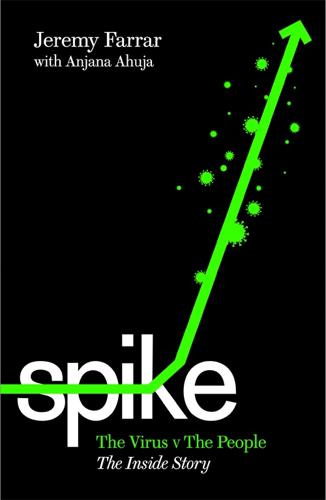
Spike: The Virus vs The People - The Inside Story
by
Jeremy Farrar
and
Anjana Ahuja
Published 15 Jan 2021
The counterpart of the lone gunman could be a hobbyist genetically modifying viruses in her garage. Maintaining a scientific presence in the security world also achieves another end: making sure that decisions on dual-use technology, such as the gain of function research that scientists like Ron Fouchier practise, are not monopolised or controlled by the security community. Dual-use technology, like the techniques to make viruses more contagious or deadly, can seem very scary. But shutting them down would mean critical science, needed for threat surveillance and safety, not being done or being carried out under the radar.

Machines of Loving Grace: The Quest for Common Ground Between Humans and Robots
by
John Markoff
Published 24 Aug 2015
Instead, he acknowledged that robots are a “dual-use” technology. “It’s very easy to pick on robots that are funded by the Defense Department,” he said. “It’s very easy to pick on a robot that looks like the Terminator, but in fact with dual-use being everywhere, it really doesn’t matter. If you’re designing a robot for health care, for instance, the autonomy it needs is actually in excess of what you would need for a disaster response robot.”8 Advanced technologies have long posed questions about dual-use. Now, artificial intelligence and machine autonomy have reframed the problem. Until now, dual-use technologies have explicitly required that humans make ethical decisions about their use.
…
“I’m being facetious,” he said, “but I’m just trying to tell you that these kinds of technologies you are developing may have uses in places you may not have fully envisioned.” In the world of weapons design, the potential for unexpected consequences has long been true for what are described as “dual-use” technologies, like nuclear power, which can be used to produce both electric power and weapons. Now it is also increasingly true of robotics and artificial intelligence technologies. These technologies are dual-use not just as weapons, but also in terms of their potential to either augment or replace humans.

The Entrepreneurial State: Debunking Public vs. Private Sector Myths
by
Mariana Mazzucato
Published 1 Jan 2011
In his 2009 study, McCray details how DARPA’s wartime missions to create and sustain an innovation ecosystem for producing superior defence technologies was transformed during peace time by the new mission of transforming those prior investments into technologies supporting economic competitiveness. McCray (2009) documents that the Department of Defense (DoD) initiated the Technology Reinvestment Program (TRP) and allocated $800 million to upgrade the nation’s existing technological capabilities following the Cold War. Through TRP, DARPA targeted dual-use technologies that would benefit the military as well as produce commercially viable technologies such as SPINTRONICS.5 McCray (2009) especially documents the increase in scientific research efforts and publications taking place during DARPA’s support for SPINTRONIC during 1990s. McCray (2009, 74) also argues that the role DARPA played in the advancement of this technology was not ‘insignificant’, simply because the programme was initiated during the time when Japanese competition in computer electronics was pushing computer giants such as IBM and Bell Labs to downsize spending on basic research.
…
W. 85 Bush, George W. 110–11 Bush, Vannevar 75 ‘business angels’ 47, 48 Buxton, Bill 102n10 Cailliau, Robert 105 California: Apple’s avoidance of capital gains tax in 173; Apple’s R&D base in 172; competitive climate of 165, 176; ‘Internet California Gold Rush’ 95; R&D tax packages of 109–10, 111n13; wind industry participation 145, 147, 156 Cameron, David 15 Canada 61 capacitive sensing technology 100–101, 100n9, 103 capitalism: Adam Smith’s view of 30; dysfunctional modern 12; financial fragility of 32n3; image of market as engine of 167; innovative labour in 13; Keynes on 30–32; State risks in framework of 193; State’s role in 195 Capital Moves (Cowie) 172 cellular technology 109, 109 Chang, Ha-Joon 9n3, 38n5, 40 China: clean technology investment by 120, 124n6, 125, 137; Evergreen Solar lured to 152; ‘green’ 5 year plan 122–4; green revolution in 11, 115n2, 116, 120; investment banks in 2, 4, 5; Kyoto Protocol signed by 123n5; new investment in renewable energy 120, 121; policy support for wind industry 153; as solar power competitor 129–31, 130n11, 144, 150; targeted industrialization in 40; ‘trade wars’ of 122, 131; wind capacity of 143; from ‘Wind Rush’ to rise of wind power sector 144–50 China Development Bank (CDB) 5, 122, 153, 189–90 Citizens for Tax Justice 174n5 classical economists 186–7 clean technology: in China 122–4; in crisis 158–9; electric cars/vehicles 108, 123, 124, 133; Ernst & Young report on 124; historical overview of 118, 118n3; investment (by country) 120–21; investment by venture capital 161; public vs. private investment in 26, 143; R&D investment in 119; sources 117–18; US calling to end support to 157; see also green revolution; wind and solar power climate change 117, 123, 135; see also green industrial revolution Climate Works 123 Clinton administration 84–5 Coad, Alex 44 ‘Cognitive Assistant that Learns and Organizes’ (CALO) project 106 Compaq 107 competition, generating 77 computer field: DARPA’s role in 75–8; hard disk drives (HDD) 96–7; personal computers 78, 89, 94–5; research support to 99; sources of key technologies used in 94–5; in wind technology 147–8 Concorde 194; see also ‘picking winners’ Cook, Tim 171 countercyclical lending 4, 140, 190 ‘creative destruction’ 10, 10n4, 58, 165; see also Schumpeter, Joseph ‘crowd funding’ 127 ‘crowding in’ 5–6, 8 ‘crowding out’ 8, 23–4 DARPA: see Defense Advanced Research Projects Agency ‘Death Valley’ stage of innovation 47, 48, 122 DEC 107 decentralization 78, 85, 104 defence contractors 76–7, 98 Defense Advanced Research Projects Agency (DARPA): ARPA-E modeled after 133; brokering role of 77, 79; clean energy funding 132n13; communications network project of 104, 104n11; creation of 76; dual-use technologies targeted by 97; funding by 76–7; model characteristics 78; organizational attributes of 133–4; role of behind SIRI 105–6; support for SPINTRONICS 97; technological contributions of 133; top talent attracted by 4 Defense Logistics Agency 132n13 demand-side policies 83, 113–15, 159 Demirel, Pelin 44 DEMOS 2 Denmark 115n2, 120n4, 121, 143, 144–5 Department of Commerce (US) 47 Department of Defense (DoD) (US): ARPANET project as Internet origin 63; energy innovation impacted by 132n13; GPS and SIRI development by 105–7; GPS costs to 105n12; solar opportunities created by 150; TRP initiated by 97 Department of Energy (DoE) (US): ARPA-E agency of 4; attracting top talent 18; clean energy research 132–3; First Solar’s link to research of 151; funding Solyndra 154; funding support of lithium-ion battery 108; loan guarantees administered by 129; SunPower’s patents link to 152; wind research funded by 147–8 Department of Energy and Climate Change (UK) 124 ‘de-risking’ of private sector 5–6, 9, 198 de-skilling perspective 186 ‘Developmental State’ 10, 37–8, 37–8n5, 40, 68; see also State development banks: see State development banks digital signal processing (DSP) 109 ‘directionality’ 2, 4–5, 32n2 ‘discursive’ battle, Judt’s 9, 58, 198 distribution and innovation 186 Domar, Evsey David 33 domestic content rules 149 Dosi, Giovanni 53 Drucker, Peter 58 drugs: classifications of new 64, 64; Gleevec 81; MRC research on 67; orphan drugs 81–3; percentages of new by types 66, 66; radical vs.

I, Warbot: The Dawn of Artificially Intelligent Conflict
by
Kenneth Payne
Published 16 Jun 2021
It’s an artful get-out that allows the development and deployment of highly capable AI weapon systems that will soon force humans well away from the loop. And reassuring noises aside, advanced states haven’t banned them. It’s hard to see them ever doing so. In the United States, the Congressional National Security Commission on AI neatly summarised the challenge. AI, the Commissioners noted, was the quintessential ‘dual use’ technology; it would transform all aspects of military activity; large scale proliferation was to be expected; and defending against AI capable adversaries without employing AI yourself would be an ‘invitation to disaster’. Their conclusion: the US should lead a coalition of democracies to develop military-salient AI.20 With a touch of hyperbole, we saw Russia’s Vladimir Putin declare that the country that masters military AI will control the world.
…
A-10 Warthog abacuses Abbottabad, Pakistan Able Archer (1983) acoustic decoys acoustic torpedoes Adams, Douglas Aegis combat system Aerostatic Corps affective empathy Affecto Afghanistan agency aircraft see also dogfighting; drones aircraft carriers algorithms algorithm creation Alpha biases choreography deep fakes DeepMind, see DeepMind emotion recognition F-117 Nighthawk facial recognition genetic selection imagery analysis meta-learning natural language processing object recognition predictive policing alien hand syndrome Aliens (1986 film) Alpha AlphaGo Altered Carbon (television series) Amazon Amnesty International amygdala Andropov, Yuri Anduril Ghost anti-personnel mines ants Apple Aristotle armour arms races Army Research Lab Army Signal Corps Arnalds, Ólafur ARPA Art of War, The (Sun Tzu) art Artificial Intelligence agency and architecture autonomy and as ‘brittle’ connectionism definition of decision-making technology expert systems and feedback loops fuzzy logic innateness intelligence analysis meta-learning as ‘narrow’ needle-in-a-haystack problems neural networks reinforcement learning ‘strong AI’ symbolic logic and unsupervised learning ‘winters’ artificial neural networks Ashby, William Ross Asimov, Isaac Asperger syndrome Astute class boats Atari Breakout (1976) Montezuma’s Revenge (1984) Space Invaders (1978) Athens ATLAS robots augmented intelligence Austin Powers (1997 film) Australia authoritarianism autonomous vehicles see also drones autonomy B-21 Raider B-52 Stratofortress B2 Spirit Baby X BAE Systems Baghdad, Iraq Baidu balloons ban, campaigns for Banks, Iain Battle of Britain (1940) Battle of Fleurus (1794) Battle of Midway (1942) Battle of Sedan (1940) batwing design BBN Beautiful Mind, A (2001 film) beetles Bell Laboratories Bengio, Yoshua Berlin Crisis (1961) biases big data Bin Laden, Osama binary code biological weapons biotechnology bipolarity bits Black Lives Matter Black Mirror (television series) Blade Runner (1982 film) Blade Runner 2049 (2017 film) Bletchley Park, Buckinghamshire blindness Blunt, Emily board games, see under games boats Boden, Margaret bodies Boeing MQ-25 Stingray Orca submarines Boolean logic Boston Dynamics Bostrom, Nick Boyd, John brain amygdala bodies and chunking dopamine emotion and genetic engineering and language and mind merge and morality and plasticity prediction and subroutines umwelts and Breakout (1976 game) breathing control brittleness brute force Buck Rogers (television series) Campaign against Killer Robots Carlsen, Magnus Carnegie Mellon University Casino Royale (2006 film) Castro, Fidel cat detector centaur combination Central Intelligence Agency (CIA) centre of gravity chaff Challenger Space Shuttle disaster (1986) Chauvet cave, France chemical weapons Chernobyl nuclear disaster (1986) chess centaur teams combinatorial explosion and creativity in Deep Blue game theory and MuZero as toy universe chicken (game) chimeras chimpanzees China aircraft carriers Baidu COVID-19 pandemic (2019–21) D-21 in genetic engineering in GJ-11 Sharp Sword nuclear weapons surveillance in Thucydides trap and US Navy drone seizure (2016) China Lake, California Chomsky, Noam choreography chunking Cicero civilians Clarke, Arthur Charles von Clausewitz, Carl on character on culmination on defence on genius on grammar of war on materiel on nature on poker on willpower on wrestling codebreaking cognitive empathy Cold War (1947–9) arms race Berlin Crisis (1961) Cuban Missile Crisis (1962) F-117 Nighthawk Iran-Iraq War (1980–88) joint action Korean War (1950–53) nuclear weapons research and SR-71 Blackbird U2 incident (1960) Vienna Summit (1961) Vietnam War (1955–75) VRYAN Cole, August combinatorial creativity combinatorial explosion combined arms common sense computers creativity cyber security games graphics processing unit (GPU) mice Moore’s Law symbolic logic viruses VRYAN confirmation bias connectionism consequentialism conservatism Convention on Conventional Weapons ConvNets copying Cormorant cortical interfaces cost-benefit analysis counterfactual regret minimization counterinsurgency doctrine courageous restraint COVID-19 pandemic (2019–21) creativity combinatorial exploratory genetic engineering and mental disorders and transformational criminal law CRISPR, crows Cruise, Thomas Cuban Missile Crisis (1962) culmination Culture novels (Banks) cyber security cybernetics cyborgs Cyc cystic fibrosis D-21 drones Damasio, Antonio dance DARPA autonomous vehicle research battlespace manager codebreaking research cortical interface research cyborg beetle Deep Green expert system programme funding game theory research LongShot programme Mayhem Ng’s helicopter Shakey understanding and reason research unmanned aerial combat research Dartmouth workshop (1956) Dassault data DDoS (distributed denial-of-service) dead hand system decision-making technology Deep Blue deep fakes Deep Green DeepMind AlphaGo Atari playing meta-learning research MuZero object recognition research Quake III competition (2019) deep networks defence industrial complex Defence Innovation Unit Defence Science and Technology Laboratory defence delayed gratification demons deontological approach depth charges Dionysus DNA (deoxyribonucleic acid) dodos dogfighting Alpha domains dot-matrix tongue Dota II (2013 game) double effect drones Cormorant D-21 GJ-11 Sharp Sword Global Hawk Gorgon Stare kamikaze loitering munitions nEUROn operators Predator Reaper reconnaissance RQ-170 Sentinel S-70 Okhotnik surveillance swarms Taranis wingman role X-37 X-47b dual use technology Eagleman, David early warning systems Echelon economics Edge of Tomorrow (2014 film) Eisenhower, Dwight Ellsberg, Daniel embodied cognition emotion empathy encryption entropy environmental niches epilepsy epistemic community escalation ethics Asimov’s rules brain and consequentialism deep brain stimulation and deontological approach facial recognition and genetic engineering and golden rule honour hunter-gatherer bands and identity just war post-conflict reciprocity regulation surveillance and European Union (EU) Ex Machina (2014 film) expert systems exploratory creativity extra limbs Eye in the Sky (2015 film) F-105 Thunderchief F-117 Nighthawk F-16 Fighting Falcon F-22 Raptor F-35 Lightning F/A-18 Hornet Facebook facial recognition feedback loops fighting power fire and forget firmware 5G cellular networks flow fog of war Ford forever wars FOXP2 gene Frahm, Nils frame problem France Fukushima nuclear disaster (2011) Future of Life Institute fuzzy logic gait recognition game theory games Breakout (1976) chess, see chess chicken Dota II (2013) Go, see Go Montezuma’s Revenge (1984) poker Quake III (1999) Space Invaders (1978) StarCraft II (2010) toy universes zero sum games gannets ‘garbage in, garbage out’ Garland, Alexander Gates, William ‘Bill’ Gattaca (1997 film) Gavotti, Giulio Geertz, Clifford generalised intelligence measure Generative Adversarial Networks genetic engineering genetic selection algorithms genetically modified crops genius Germany Berlin Crisis (1961) Nuremburg Trials (1945–6) Russian hacking operation (2015) World War I (1914–18) World War II (1939–45) Ghost in the Shell (comic book) GJ-11 Sharp Sword Gladwell, Malcolm Global Hawk drone global positioning system (GPS) global workspace Go (game) AlphaGo Gödel, Kurt von Goethe, Johann golden rule golf Good Judgment Project Google BERT Brain codebreaking research DeepMind, see DeepMind Project Maven (2017–) Gordievsky, Oleg Gorgon Stare GPT series grammar of war Grand Challenge aerial combat autonomous vehicles codebreaking graphics processing unit (GPU) Greece, ancient grooming standard Groundhog Day (1993 film) groupthink guerilla warfare Gulf War First (1990–91) Second (2003–11) hacking hallucinogenic drugs handwriting recognition haptic vest hardware Harpy Hawke, Ethan Hawking, Stephen heat-seeking missiles Hebrew Testament helicopters Hellfire missiles Her (2013 film) Hero-30 loitering munitions Heron Systems Hinton, Geoffrey Hitchhiker’s Guide to the Galaxy, The (Adams) HIV (human immunodeficiency viruses) Hoffman, Frank ‘Holeshot’ (Cole) Hollywood homeostasis Homer homosexuality Hongdu GJ-11 Sharp Sword honour Hughes human in the loop human resources human-machine teaming art cyborgs emotion games King Midas problem prediction strategy hunter-gatherer bands Huntingdon’s disease Hurricane fighter aircraft hydraulics hypersonic engines I Robot (Asimov) IARPA IBM identity Iliad (Homer) image analysis image recognition cat detector imagination Improbotics nformation dominance information warfare innateness intelligence analysts International Atomic Energy Agency International Criminal Court international humanitarian law internet of things Internet IQ (intelligence quotient) Iran Aegis attack (1988) Iraq War (1980–88) nuclear weapons Stuxnet attack (2010) Iraq Gulf War I (1990–91) Gulf War II (2003–11) Iran War (1980–88) Iron Dome Israel Italo-Turkish War (1911–12) Jaguar Land Rover Japan jazz JDAM (joint directed attack munition) Jeopardy Jobs, Steven Johansson, Scarlett Johnson, Lyndon Joint Artificial Intelligence Center (JAIC) de Jomini, Antoine jus ad bellum jus in bello jus post bellum just war Kalibr cruise missiles kamikaze drones Kasparov, Garry Kellogg Briand Pact (1928) Kennedy, John Fitzgerald KGB (Komitet Gosudarstvennoy Bezopasnosti) Khrushchev, Nikita kill chain King Midas problem Kissinger, Henry Kittyhawk Knight Rider (television series) know your enemy know yourself Korean War (1950–53) Kratos XQ-58 Valkyrie Kubrick, Stanley Kumar, Vijay Kuwait language connectionism and genetic engineering and natural language processing pattern recognition and semantic webs translation universal grammar Law, Jude LeCun, Yann Lenat, Douglas Les, Jason Libratus lip reading Litvinenko, Alexander locked-in patients Lockheed dogfighting trials F-117 Nighthawk F-22 Raptor F-35 Lightning SR-71 Blackbird logic loitering munitions LongShot programme Lord of the Rings (2001–3 film trilogy) LSD (lysergic acid diethylamide) Luftwaffe madman theory Main Battle Tanks malum in se Manhattan Project (1942–6) Marcus, Gary Maslow, Abraham Massachusetts Institute of Technology (MIT) Matrix, The (1999 film) Mayhem McCulloch, Warren McGregor, Wayne McNamara, Robert McNaughton, John Me109 fighter aircraft medical field memory Merkel, Angela Microsoft military industrial complex Mill, John Stuart Milrem mimicry mind merge mind-shifting minimax regret strategy Minority Report (2002 film) Minsky, Marvin Miramar air base, San Diego missiles Aegis combat system agency and anti-missile gunnery heat-seeking Hellfire missiles intercontinental Kalibr cruise missiles nuclear warheads Patriot missile interceptor Pershing II missiles Scud missiles Tomahawk cruise missiles V1 rockets V2 rockets mission command mixed strategy Montezuma’s Revenge (1984 game) Moore’s Law mosaic warfare Mueller inquiry (2017–19) music Musk, Elon Mutually Assured Destruction (MAD) MuZero Nagel, Thomas Napoleon I, Emperor of the French Napoleonic France (1804–15) narrowness Nash equilibrium Nash, John National Aeronautics and Space Administration (NASA) National Security Agency (NSA) National War College natural language processing natural selection Nature navigation computers Nazi Germany (1933–45) needle-in-a-haystack problems Netflix network enabled warfare von Neumann, John neural networks neurodiversity nEUROn drone neuroplasticity Ng, Andrew Nixon, Richard normal accident theory North Atlantic Treaty Organization (NATO) North Korea nuclear weapons Cuban Missile Crisis (1962) dead hand system early warning systems F-105 Thunderchief and game theory and Hiroshima and Nagasaki bombings (1945) Manhattan Project (1942–6) missiles Mutually Assured Destruction (MAD) second strike capability submarines and VRYAN and in WarGames (1983 film) Nuremburg Trials (1945–6) Obama, Barack object recognition Observe Orient Decide and Act (OODA) offence-defence balance Office for Naval Research Olympic Games On War (Clausewitz), see Clausewitz, Carl OpenAI optogenetics Orca submarines Ottoman Empire (1299–1922) pain Pakistan Palantir Palmer, Arnold Pandemonium Panoramic Research Papert, Seymour Parkinson’s disease Patriot missile interceptors pattern recognition Pearl Harbor attack (1941) Peloponnesian War (431–404 BCE) Pentagon autonomous vehicle research codebreaking research computer mouse development Deep Green Defence Innovation Unit Ellsberg leaks (1971) expert system programme funding ‘garbage in, garbage out’ story intelligence analysts Project Maven (2017–) Shakey unmanned aerial combat research Vietnam War (1955–75) perceptrons Perdix Pershing II missiles Petrov, Stanislav Phalanx system phrenology pilot’s associate Pitts, Walter platform neutrality Pluribus poker policing polygeneity Portsmouth, Hampshire Portuguese Man o’ War post-traumatic stress disorder (PTSD) Predator drones prediction centaur teams ‘garbage in, garbage out’ story policing toy universes VRYAN Prescience principles of war prisoners Project Improbable Project Maven (2017–) prosthetic arms proximity fuses Prussia (1701–1918) psychology psychopathy punishment Putin, Vladimir Pyeongchang Olympics (2018) Qinetiq Quake III (1999 game) radar Rafael RAND Corporation rational actor model Rawls, John Re:member (Arnalds) Ready Player One (Cline) Reagan, Ronald Reaper drones reciprocal punishment reciprocity reconnaissance regulation ban, campaigns for defection self-regulation reinforcement learning remotely piloted air vehicles (RPAVs) revenge porn revolution in military affairs Rid, Thomas Robinson, William Heath Robocop (1987 film) Robotics Challenge robots Asimov’s rules ATLAS Boston Dynamics homeostatic Shakey symbolic logic and Rome Air Defense Center Rome, ancient Rosenblatt, Frank Royal Air Force (RAF) Royal Navy RQ-170 Sentinel Russell, Stuart Russian Federation German hacking operation (2015) Litvinenko murder (2006) S-70 Okhotnik Skripal poisoning (2018) Ukraine War (2014–) US election interference (2016) S-70 Okhotnik SAGE Said and Done’ (Frahm) satellite navigation satellites Saudi Arabia Schelling, Thomas schizophrenia Schwartz, Jack Sea Hunter security dilemma Sedol, Lee self-actualisation self-awareness self-driving cars Selfridge, Oliver semantic webs Shakey Shanahan, Murray Shannon, Claude Shogi Silicon Valley Simon, Herbert Single Integrated Operations Plan (SIOP) singularity Siri situational awareness situationalist intelligence Skripal, Sergei and Yulia Slaughterbots (2017 video) Slovic, Paul smartphones Smith, Willard social environments software Sophia Sorcerer’s Apprentice, The (Goethe) South China Sea Soviet Union (1922–91) aircraft Berlin Crisis (1961) Chernobyl nuclear disaster (1986) Cold War (1947–9), see Cold War collapse (1991) Cuban Missile Crisis (1962) early warning systems Iran-Iraq War (1980–88) Korean War (1950–53) nuclear weapons radar technology U2 incident (1960) Vienna Summit (1961) Vietnam War (1955–75) VRYAN World War II (1939–45) Space Invaders (1978 game) SpaceX Sparta Spike Firefly loitering munitions Spitfire fighter aircraft Spotify Stanford University Stanley Star Trek (television series) StarCraft II (2010 game) stealth strategic bombing strategic computing programme strategic culture Strategy Robot strategy Strava Stuxnet sub-units submarines acoustic decoys nuclear Orca South China Sea incident (2016) subroutines Sukhoi Sun Tzu superforecasting surveillance swarms symbolic logic synaesthesia synthetic operation environment Syria Taliban tanks Taranis drone technological determinism Tempest Terminator franchise Tesla Tetlock, Philip theory of mind Threshold Logic Unit Thucydides TikTok Tomahawk cruise missiles tongue Top Gun (1986 film) Top Gun: Maverick (2021 film) torpedoes toy universes trade-offs transformational creativity translation Trivers, Robert Trump, Donald tumours Turing, Alan Twitter 2001: A Space Odyssey (1968 film) Type-X Robotic Combat Vehicle U2 incident (1960) Uber Uexküll, Jacob Ukraine ultraviolet light spectrum umwelts uncanny valley unidentified flying objects (UFOs) United Kingdom AI weapons policy armed force, size of Battle of Britain (1940) Bletchley Park codebreaking Blitz (1940–41) Cold War (1947–9) COVID-19 pandemic (2019–21) DeepMind, see DeepMind F-35 programme fighting power human rights legislation in Litvinenko murder (2006) nuclear weapons principles of war Project Improbable Qinetiq radar technology Royal Air Force Royal Navy Skripal poisoning (2018) swarm research wingman concept World War I (1914–18) United Nations United States Afghanistan War (2001–14) Air Force Army Research Lab Army Signal Corps Battle of Midway (1942) Berlin Crisis (1961) Bin Laden assassination (2011) Black Lives Matter protests (2020) centaur team research Central Intelligence Agency (CIA) Challenger Space Shuttle disaster (1986) Cold War (1947–9), see Cold War COVID-19 pandemic (2019–21) Cuban Missile Crisis (1962) culture cyber security DARPA, see DARPA Defense Department drones early warning systems F-35 programme Gulf War I (1990–91) Gulf War II (2003–11) IARPA Iran Air shoot-down (1988) Korean War (1950–53) Manhattan Project (1942–6) Marines Mueller inquiry (2017–19) National Security Agency National War College Navy nuclear weapons Office for Naval Research Patriot missile interceptor Pearl Harbor attack (1941) Pentagon, see Pentagon Project Maven (2017–) Rome Air Defense Center Silicon Valley strategic computing programme U2 incident (1960) Vienna Summit (1961) Vietnam War (1955–75) universal grammar Universal Schelling Machine (USM) unmanned aerial vehicles (UAVs), see drones unsupervised learning utilitarianism UVision V1 rockets V2 rockets Vacanti mouse Valkyries Van Gogh, Vincent Vietnam War (1955–75) Vigen, Tyler Vincennes, USS voice assistants VRYAN Wall-e (2008 film) WannaCry ransomware War College, see National War College WarGames (1983 film) warrior ethos Watson weapon systems WhatsApp Wiener, Norbert Wikipedia wingman role Wittgenstein, Ludwig World War I (1914–18) World War II (1939–45) Battle of Britain (1940) Battle of Midway (1942) Battle of Sedan (1940) Bletchley Park codebreaking Blitz (1940–41) Hiroshima and Nagasaki bombings (1945) Pearl Harbor attack (1941) radar technology V1 rockets V2 rockets VRYAN and Wrangham, Richard Wright brothers WS-43 loitering munitions Wuhan, China X-37 drone X-drone X-rays YouTube zero sum games
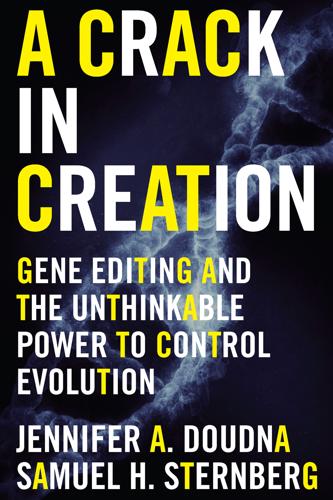
A Crack in Creation: Gene Editing and the Unthinkable Power to Control Evolution
by
Jennifer A. Doudna
and
Samuel H. Sternberg
Published 15 Mar 2017
Without explaining exactly how genome editing could be weaponized, the report noted that “research in genome editing conducted by countries with different regulatory or ethical standards than those of Western countries probably increases the risk of the creation of potentially harmful biological agents or products. Given the broad distribution, low cost, and accelerated pace of development of this dual-use technology, its deliberate or unintentional misuse might lead to far-reaching economic and national security implications.” Lest there be any doubt about the immediate source of their concern, the authors pointedly mentioned that “advances in genome editing in 2015 have compelled groups of high-profile US and European biologists to question unregulated editing of the human germline”—an obvious reference to Huang’s article and our perspective.
…
See Cas9 as classroom guest, 101–2 CRISPR, introduction to, 39–45 CRISPR article (Science), 85 Double Helix, The (Watson), 10–11 dream of, xi–xii education, 21, 25, 27 on ethics of germline editing, 225–30, 234–35 father’s death, 37 gene editing, xix introduction, xii lab retreat, 35–36 papaya fungus research, 60–61 “A Prudent Path Forward for Genomic Engineering and Germline Gene Modification,” 211–12 publication and ramifications of work, xvi–xviii Sullenger and, 21–22 TV interview, 38–39, 155 Yale, faculty member, 20 See also CRISPR (clustered regularly interspaced short palindromic repeats); Sternberg, Sam Drubin, David, 93 drugs, from transgenic animals, 139–40 dual-use technology, 217 Duchenne muscular dystrophy (DMD), 169–70 DuPont Pioneer, 128 dysentery, 45–46 dystrophin protein, 169 E East-Seletsky, Alexandra, 95 Ebert, Benjamin, 173 Editas Medicine, 89, 177 embryos, human editing with CRISPR, 208 experiments on, 213–19 genetic testing of, 194–95 germline editing in, 185–86, 186 regulation of research on, 236–37 stances on gene editing of, 216–17, 218–19 triploid, 215–16 end joining, 93, 105, 107, 108, 110 endocytosis, 93 endonucleases, 29 Engineering the Human Germline (conference), 192–93 environment de-extinction and, 147 gene drives and, 151, 153 Environmental Protection Agency (EPA), 127 Enviropig, 129 EPOR gene, 230 erythropoietin, 230 Escherichia coli, 53, 63, 66, 68, 202 Esvelt, Kevin, 148, 149 ETC Group, 152 ethics concerns about misuse of CRISPR, 199–201 de-extinction and, 146 gene splicing, 201–4 germline editing, 160, 209, 218–19, 220–21, 226–34 germline modification, 189–90, 193–94 human embryo experiments, 216 preimplantation genetic diagnosis, 195 prenatal testing, 194 three-parent IVF, 196–97 See also controversies; risks eugenics, 193, 221, 233–34, 236 Evans, Barbara, 221 Evans, Martin, 25 ex vivo gene editing, 161–66, 162, 175 exonucleases, 29 extinction, forcible, 119 F farmaceutical production, 139–40 FDA (Food and Drug Administration), 127, 196, 235, 237 Fenner, Marsha, 207 Feynman, Richard, 241 Fire, Andrew, 40 Fleming, Alexander, 245 Food and Drug Administration (FDA), U.S., 127, 196, 235, 237 food production, 32, 122–28 GMOs, 123–25, 126 livestock, 128–37 potential of CRISPR and, 128 Foster, Bill, 221 Francis Crick Institute, 219 Frankenfish, 128–29, 130 Franklin, Rosalind, 10 G Gantz, Valentino, 149 Garneau, Josiane, 69, 75 Gates Foundation, 65 gel electrophoresis, 79 gene bombs, 152 gene corrections, 121 gene deletion, 107, 121 gene drives, 148–52, 150 gene editing, 24–25, 26, 122–28, 178–81 in any organism, 98–99 computers and, 112 correcting single-letter DNA mistakes, 104 delivery strategies, 161–66 development of, 22–26, 32 DNA repair, 104–8 expanding limits of, 100 impact of, 117–19 intentional, 7 multiplexed, 173–74 natural, 5–9 need for discussion about, 205 promise of, 120–21 risks of, 119, 148–52 scarless, 126, 126 tactics for, 100 of unborn humans, 213–19 via homologous recombination, 25 gene editing, ex vivo, 161–66, 162, 175–77 gene editing, in vivo, 161, 167–71, 167 gene editing, therapeutic cells targeted in, 158–60 ex vivo gene editing, 161–66, 162, 175–77 possibilities of, 155–58 in vivo gene editing, 161, 167–71, 167 See also diseases; medicine; therapeutics gene expression, 102–3 gene insertions, 121 gene inversion, 107 gene knock-in, 149 gene knockout, 103–5, 103, 121, 131, 134–35 gene splicing, 201–4, 205 gene targeting, 24, 26 See also gene editing gene therapy in 1980s, 19–20 advances in, 20 early attempts at, 16–19 harm done by, 20–21 ineffectiveness of, 21 gene-editing kits, 113, 199 gene-expression control, 109–10 genetic diseases.
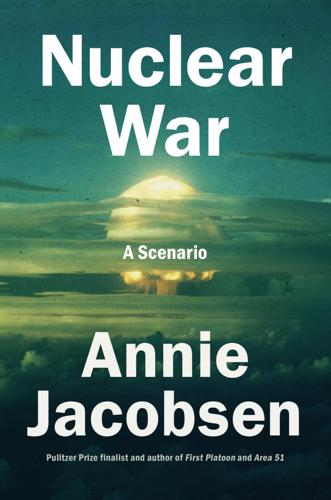
Nuclear War: A Scenario
by
Annie Jacobsen
Published 25 Mar 2024
After his March 1973 release, Hervey insisted on wearing his POW uniform to medal ceremonies, much to the Pentagon’s chagrin. “The invitations stopped coming,” he told me. “They wanted war heroes, not former prisoners.” Charles H. Townes (1915–2015), who won the Nobel Prize in 1964, left a profound impact on my thinking (which I write about in Phenomena). The concept of dual use technology—science that can be used to help or to harm—is a paradox. Townes’s invention, the laser, has done so much to benefit mankind, from laser surgery to laser printers, but the Pentagon’s classified laser weapons program is fostering a new kind of arms race. Dr. Walter Munk (1917–2019), geophysicist and ocean scientist, worked on anti-submarine warfare and marine acoustics for the Navy.
…
Stenchikov, “Nuclear Winter Revisited with a Modern Climate Model and Current Nuclear Arsenals: Still Catastrophic Consequences,” Journal of Geophysical Research Atmospheres 112, no. D13 (July 2007), fig. 10., page 11 of 14; Ehrlich et al., The Cold and the Dark, 113. GO TO NOTE REFERENCE IN TEXT societies that we once built, advanced: Interview with Charles H. Townes (on dual-use technologies). GO TO NOTE REFERENCE IN TEXT told Schmidt, yes: Schmidt, Göbekli Tepe, 12. GO TO NOTE REFERENCE IN TEXT the wishing tree: Morsch notes, “The tree is dedicated to the graves of three innocent people regarded as saints. Therefore the place became a pilgrimage for the locals.
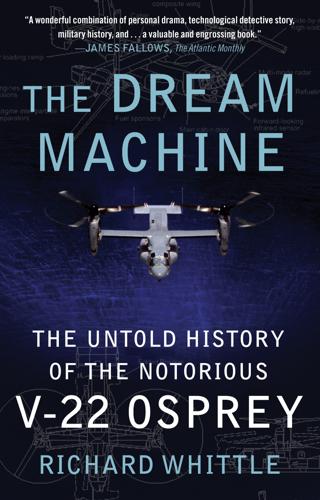
The Dream Machine: The Untold History of the Notorious V-22 Osprey
by
Richard Whittle
Published 26 Apr 2010
* * * As the Court of Inquiry was taking testimony that summer and fall, Democrat Bill Clinton and his presidential running mate, Tennessee senator Al Gore, were using the Osprey as an issue against Bush and Quayle. Clinton and Gore said they would build the Osprey if elected because the tiltrotor was an example of “dual-use technology”—items that could be made for the military but converted to civilian use. Clinton endorsed the Osprey in an August speech in San Antonio. In September, Gore visited Bell Helicopter’s Plant 6 and said the tiltrotor could “revolutionize the air transport infrastructure for this country.” Clinton endorsed the Osprey again in a televised debate with Bush on October 11.
…
“Curly,” 260, 261, 348 Curren, Jim, 162, 164 Dailey, John, 302, 318, 326 Davis, Al F., 107–8, 116 defense contractors, 13, 14–18, 28, 43, 44, 65–66, 89, 103, 146–50 competition between, 146–47 Congress lobbied by, 92–95, 99, 139, 143, 181, 185–86, 205, 207, 210, 279, 321 cost-plus vs. fixed-price contracts of, 147–49 Defense Department, U.S., 3–4, 15, 44, 55–56, 89–90, 92, 136–37, 141, 146, 159–60, 168–93, 247–248, 315–16, 317–18, 329–30, 342, 344 see also Cheney, Dick, cancellation by defense procurement, 69, 88–101, 172, 258, 389 concurrent development in, 247–48 corruption in, 146 cost overruns in, 146–50, 151 defense budget and, 92–95 FSD in, 147–48 Iron Triangle in, 94, 205, 321 job creation aspect of, 94, 101, 144 process of, 91–92, 99, 147, 312 production contracts of, 147–48 stages of, 117 unrealistic requirements in, 115–16 Defense Writers Group, 351–52, 376 “deflected slipstream” aircraft designs, 33–34 DeLauer, Richard D., 89–90, 91, 97 deLeon, Rudy, 302, 318 Delta Force (Beckwith), 62 Delta Force commandos, 60, 61, 64, 67 disk loading, 114, 166, 195, 327–28, 352–53, 356 Dodge, Kevin, 216–17, 226, 228, 231 Dolan, Beverly, 148–49 Dorsey, Frank, 16–18 downwash, 166, 242, 265, 281–82, 326, 329, 334, 337–38, 342, 352–53, 364 dual-sling option, 192–93 dual-use technology, 237 Dubberly, Mike, 130–31 ducted fans, 33 Dugan, Dan, 73, 82, 83 Dunford, Philip, 159, 164, 165–67, 282 Dunn, Harry P., 326–30, 331–32, 333–34, 342, 347–48, 351–52, 359–60, 366, 375, 376, 378 Dunnivan, Richard, 291–93, 344, 345, 346, 348, 362–63 dynamic instability (air resonance), 37 dynamics, 109 Eagle Claw, Operation, 59–65, 67, 366 Eisenhower, Dwight D., 14–15, 27 EMD (Engineering and Manufacturing Development), 237–38, 245–47, 248, 249–50 Engine Air Particle Separators (EAPS), 215, 385 engines, 11, 22, 32, 33, 34, 74, 336 JVX, 114, 118, 132, 133, 135, 150–152, 206, 215, 246 Navair’s design competition for, 150–52 specific fuel consumption (SFC) of, 151 environmental chambers, 119–20 environmental control systems, 196–197, 206 Erhart, Ron, 73, 79–80, 82–83, 96, 124, 157–59, 188–89, 200–202 FADEC engine regulators, 243 Faibisoff, Sara, 379, 381, 386 Fairchild VZ-5 “deflected slipstream” aircraft, 33–34 Farnborough International Airshow, 46–47, 377 Federal Aviation Administration (FAA), 159–60, 188, 257, 338, 366 First Convertible Aircraft Congress (1949), 25, 31 First to Fight (Krulak), 53 Fitch, William F., 102–3, 138–40, 142 flight control system, 58, 201–2, 235, 236, 262, 294–97, 311, 322–24, 325, 341 inadequate testing of, 322, 323–24 of JVX design, 105, 113, 118, 132–133, 148, 166, 195, 206 see also Thrust Control Lever flight envelope, 247, 250, 261, 282–83, 288, 354, 357 flight testing, 147, 161, 193, 194–99, 200–202, 257–85, 329, 334–36, 342, 352–60 autorotation in, 335–36 at Bell Helicopter, 27, 28, 36–38, 41, 42, 395 compressed schedule of, 248–249, 250–51, 261, 282–83 in computerized flight simulators, 355 developmental, 216–17, 226, 248–51, 261, 283, 288, 335–36 of downwash effects, 364 of flight envelope, 250, 282–83, 288 HROD tests in, 353, 355–59, 369 mock missions in, 2–3, 244, 251–252, 262–74, 366–67, 372 operational, 216–17, 226, 248, 249–52; see also OPEVAL test cards in, 354–55 vortex ring state in, 325, 339, 340, 343, 350, 351, 353, 355–59, 360 Focke-Wulf 61 (Fw 61), 18, 19, 23, 30–31 FOD (foreign object debris), 197, 201–2, 292 Franklin Institute, 18–21 Freisner, Lynn, 196–99, 200–202 FRP (Full Rate Production), 244, 248, 250, 251, 252, 257, 258, 277, 278, 280, 285, 286, 287, 288, 289–90, 300, 304–5, 307, 313, 314, 330, 364–65, 369 FSD (Full Scale Development), 146–50, 154, 157, 164–65, 177, 183, 184, 192, 193–94, 204, 208, 237–38, 247, 333 Fulton Pickup System, 39–41, 142 fuselage, 117, 118, 119, 125, 126, 129, 130, 131, 161–62, 164, 206 frames and formers of, 132, 245–46 Gaffey, Troy, 29, 48, 109–10, 124–25 Gaffney, Frank, 315 Gaillard, Lee, 375–76 Gallagher, Paul, 304, 309 Gard, Gerald, 104 Geiger, Roy S., 54 General Electric engine design, 150–52 General Motors-Allison engine design, 150–52 Geren, Preston M., Jr., 185, 187, 190, 203, 204, 231–32 Ghormley, Timothy, 310 Glenn, John, 54, 63, 176 Glosson, Buster, 179–80 Goldwater, Barry, 85–86, 94 XV-15 piloted by, 95–96, 327 Gore, Al, 237 Gorenstein, Nathan, 236 Gray, Alfred M., Jr., 163–64, 178–79, 190, 193, 196, 203–4, 205 Great Britain, 1–3, 33, 34, 59, 142–43, 182, 253–54, 377 Farnborough International Airshow of, 46–47, 377 Harrier jet fighter of, 34, 59, 89, 153, 156 Griffith, Thomas W., 118, 127, 130 Grina, Kenneth, 124–25, 128–29, 130–31, 206 Grohsmeyer, Steve, 353–54, 356–58 Gruber, Brooks S.
…
rotor blades designed by, 41–42 tiltrotor briefings delivered by, 38, 49–51, 59, 65–68, 72, 87, 100, 143–44, 181, 182, 208, 209, 387–88 titles of, 75 Whisper Tip designed by, 41, 42 XV-15 rapid conversion maneuver filmed by, 79–81 stabilizer bar, 21 Stansbury, Dick, 36–37 Stecyk, Anthony, 162, 214–15, 217, 219–33 Stecyk, Michelle, 162, 214–15, 217, 219–20, 230, 233, 237 Stevens, Ted, 138–40, 142, 176 strain gauges, 37–38, 74, 80, 166, 249, 254 Sullivan, Pat, 217–33, 235, 236, 237 swashplate actuators, 258 Sweaney, Carol, 252, 286, 302–3, 308, 315 Sweaney, Katrina, 291 Sweaney, Keith M., 241–43, 252, 259–260, 274, 276–77, 280, 334 in New River crash, 286–87, 290–301, 302–3, 314, 315, 322–24 “tail-sitter” (Pogo) aircraft, 33 Textron Inc., 81, 122, 123, 124, 148–49, 165, 169–70, 181–82, 205, 210 Thayer, Paul, 84, 141 Thomason, Tommy H., 49, 80–81 Thompson, Mark, 371, 377–79, 383 thrust, 10–11, 31, 33–34, 114 Thrust Control Lever (TCL), 157–59, 200–202, 246–47, 384 “collective dyslexia” caused by, 200–201, 247 tiltrotors, 7–8, 14, 17, 19, 20, 29–31, 35, 72, 73, 76, 77–106, 108–12, 134–35, 301, 302, 317, 318, 326, 347, 376, 388–89 airspeed of, 97, 98, 192 altitude capability of, 98, 112 in civilian aviation, 95, 100, 101, 111, 144, 145–46, 159–60, 173, 179, 182, 186, 188, 189, 203, 209–10, 232, 253–57, 334, 389, 395–94 configuration of, 117–18, 396 conversion modes of, 250 as dual-use technology, 237 hovering by, 112 Japanese interest in, 187, 253, 254 in joint armed services program, see JVX Lehman’s advocacy of, 85, 88, 91, 94, 99, 103, 137, 204–5, 377 Platt-Lepage, 31 vortex ring state vulnerability of, 325, 329, 334, 336–39, 340, 342, 350, 351, 352–53, 356–59, 394 XV-3 convertiplane, 36–38 see also Bell XV-15 tiltrotors, marketing of, 38, 59, 65–68, 72, 78–86, 87, 95–97, 100, 110–112, 142–46 civilian aircraft in, 253–57, 395–94 as “national asset,” 145–46, 157, 159–60, 171–72, 209–10 prospective foreign sales of, 182, 253–54, 255, 256–57 see also Bell XV-15, as marketing tool; Spivey, Richard F.
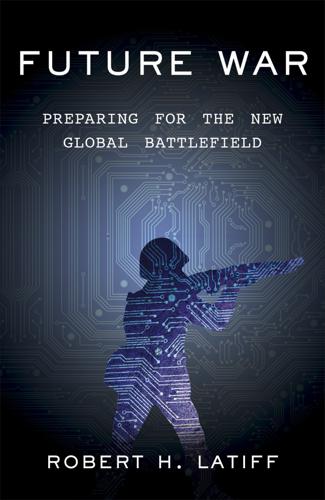
Future War: Preparing for the New Global Battlefield
by
Robert H. Latiff
Published 25 Sep 2017
I continue to believe the tragedy occurred because the operators of the system were ill-trained by the providers. Governments have engaged in important debates about nuclear arms reduction treaties, conventions banning weapons of mass destruction, and weapons that result in unnecessary and superfluous suffering, such as land mines. Dual-use technologies like artificial intelligence or synthetic biology present a different dilemma in that they have the potential to be used in both good and evil ways. While the technologies themselves are not the subject of treaties and conventions, we are now faced with controlling the proliferation of weapons employing these technologies.

In Spite of the Gods: The Rise of Modern India
by
Edward Luce
Published 23 Aug 2006
Blackwill, who had been a senior arms negotiator during the cold war, instantly chose India. Bush said to Blackwill: “A billion people and it’s a democracy. Ain’t that something?”19 Second, in spite of India’s nuclear tests, which had triggered U.S. sanctions on the export of sensitive, or “dual-use,” technology to India, the Bush administration was impressed by India’s “responsible stewardship” of its nuclear arsenal. In contrast to Pakistan, which had been passing on the technology to anyone who had the cash, India was considered to have a good system of export controls. Third, the almost two million people of Indian origin based in the United States had become a strong new voice in U.S. politics.
…
The United States offered to accept India’s nuclear weapons status, reinstate the export of nuclear fuel for India’s civil nuclear program, and lift all remaining restrictions on the export of sensitive technologies to India. In return, India would tighten export controls to prevent the sale of “dual-use” technology to other countries, accept international monitoring of its civil nuclear plants, and erect more credible walls between its civilian and military sectors—particularly in the space program, where India is believed to have transferred satellite launch technology to its ballistic missile scientists.

Hacking Politics: How Geeks, Progressives, the Tea Party, Gamers, Anarchists and Suits Teamed Up to Defeat SOPA and Save the Internet
by
David Moon
,
Patrick Ruffini
,
David Segal
,
Aaron Swartz
,
Lawrence Lessig
,
Cory Doctorow
,
Zoe Lofgren
,
Jamie Laurie
,
Ron Paul
,
Mike Masnick
,
Kim Dotcom
,
Tiffiniy Cheng
,
Alexis Ohanian
,
Nicole Powers
and
Josh Levy
Published 30 Apr 2013
Kim Dotcom (founder of Megaupload) My main disagreement with the current state of the copyright debate is that the political balance is tilted too much in favor of content owners to the detriment of Internet innovation. Hollywood and the United States seem to be picking and choosing who they like and don’t like and that does not provide for the fairness, due process, and predictability that dual use technology companies like Megaupload need to grow and thrive. I believe it would be better for society to allow breathing room for Internet innovation. This case is at its core not about a criminal issue but rather an economics and political debate that is better suited to be dealt with in Congress. Aaron Swartz There are a lot of powerful people who want to clamp down on the Internet.
…
KIM DOTCOM: My main disagreement with the current state of the copyright debate is that the political balance is tilted too much in favor of content owners to the detriment of Internet innovation. Hollywood and the United States seem to be picking and choosing who they like and don’t like and that does not provide for the fairness, due process, and predictability that dual use technology companies like Megaupload need to grow and thrive. I believe it would be better for society to allow breathing room for Internet innovation. This case is at its core not about a criminal issue but rather an economics and political debate that is better suited to be dealt with in Congress. I believe in a system that promotes creativity and protects creative works and at the same time doesn’t unduly burden the growth of Internet service providers like cloud storage companies.

The CIA Insider's Guide to the Iran Crisis
by
Gareth Porter
Published 21 Jan 2020
The center’s specialists were strong on tracking commercial sources of WMD-related technology and other such technical matters that served Pentagon needs, but had no knowledge of the target countries’ politics, policies or history, according to three former senior intelligence analysts who had worked with those specialists on analytic products in the early 1990s. That technical bent created a natural tendency to assume that target countries were involved in proliferation.94 That was the policy and institutional setting in which U.S. and allied intelligence agencies began intercepting telex messages between Iran and companies selling nuclear and dual-use technology in the early 1990s. The messages, which often mentioned Sharif University, included orders for rings magnets, fluoride and fluoride-handling equipment, vacuum equipment and other technologies, all of which could be used in a centrifuge uranium enrichment program but could also have been for non-nuclear applications.

Peers, Pirates, and Persuasion: Rhetoric in the Peer-To-Peer Debates
by
John Logie
Published 29 Dec 2006
Breyer also questions where the threshold for “non-infringing use” ought to lie, pointing to the “9% or so of authorized time-shifting uses of the VCR” on which the Betamax verdict apparently rested. Breyer’s opinion opens with the statement “I agree with the Court that the distributor of a dual-use technology may be liable for the infringing activities of third parties where he or she actively seeks to advance the infringement,” but elsewhere in his decision Breyer suggests that the 9th Circuit did not err in awarding summary judgment in this case. The heart of Breyer’s opinion is an elegiac testament to the Betamax standard, which he endorses on four grounds: 1) Sony’s rule is clear; 2) Sony’s rule is strongly technology protecting; 3) Sony’s rule Pa r l orPr e s s wwwww. p a r l or p r e s s . c om Conclusion: The Cat Came Back 139 is forward looking; and 4) Sony’s rule is mindful of the limitations facing judges where matters of technology are concerned.
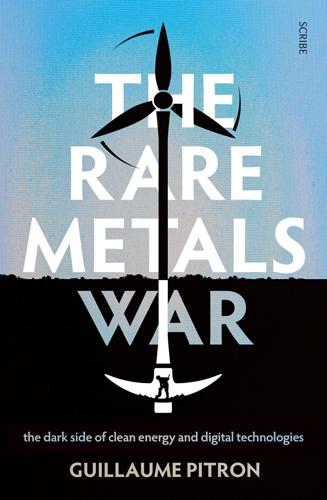
The Rare Metals War
by
Guillaume Pitron
Published 15 Feb 2020
We went to our superiors within the defense department, we argued ad infinitum, and eventually we were ignored.’ The apathy of the Democratic administration is even more surprising given that China was in the process of executing its ‘Sixteen-Character Policy’, which it had outlined as early as 1978.16 Enacted by Deng Xiaoping, the strategy included a program to acquire ‘dual-use’ technologies to ultimately strengthen China’s army. Magnequench was an ideal choice, as its magnets were used for the vehicles of General Motors and for the US Army. The premise of the Sixteen-Character Policy was pragmatic: given the difficulty in procuring war technologies due to the US arms embargo, China would buy foreign companies whose know-how in civil applications could be repurposed for more hostile ends.

Bomb Scare
by
Joseph Cirincione
Published 24 Dec 2011
This is an everything-we-can-do strategy.26 The report analyzed how to end the threat of nuclear terrorism by implementing comprehensive efforts to secure and eliminate nuclear materials worldwide and to stop the illegal transfer of nuclear technology. The strategy would prevent new nuclear weapon states by increasing penalties for withdrawal from the NPT, enforcing compliance with strengthened treaties, and radically reforming the nuclear fuel cycle to prevent states from acquiring dual-use technologies for uranium enrichment or plutonium reprocessing. The threat from existing arsenals would be reduced by shrinking global stockpiles, curtailing research on new nuclear weapons, and taking weapons off hair-trigger alert status. Finally, greater efforts would be devoted to resolving the regional conflicts that fuel proliferation and to bringing the three nuclear weapon states outside the NPT (India, Pakistan, and Israel) into conformance with an expanded set of global nonproliferation norms.

Life at the Speed of Light: From the Double Helix to the Dawn of Digital Life
by
J. Craig Venter
Published 16 Oct 2013
A robot may not harm humanity, or, by inaction, allow humanity to come to harm.” One can apply these principles equally to our efforts to alter the basic machinery of life by substituting “synthetic life form” for “robot.” Emerging technologies, whether in robotics or in synthetic biology, can be a double-edged sword. Today there is much debate about “dual-use” technologies—as, for instance, in a study published in 2012 by the American Association for the Advancement of Science, a group of American universities, and the FBI.31 Their investigation was prompted by research undertaken by teams in America and the Netherlands that had identified the elements of the H5N1 influenza virus that enabled its rapid spread.

Chomsky on Mis-Education
by
Noam Chomsky
Published 24 Mar 2000
Or to the Heritage Foundation, which crafts the budget proposals for the congressional “conservatives” and therefore called for (and obtained) an increase in Pentagon spending beyond Clinton’s increase to ensure that the “defense industrial base” remains solid, protected by state power, and offering dual-use technology to its beneficiaries to enable them to dominate commercial markets and enrich themselves at public expense. All understand very well that free enterprise means that the public pays the costs and bears the risks if things go wrong—for example, bank and corporate bailouts that have cost the public hundreds of billions of dollars in recent years.
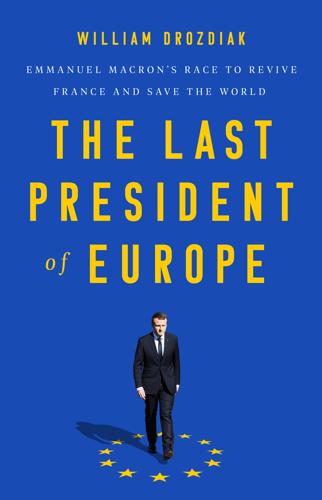
The Last President of Europe: Emmanuel Macron's Race to Revive France and Save the World
by
William Drozdiak
Published 27 Apr 2020
He laid out a proposal for a foreign investment screening process that would help oversee future investments and foreign acquisitions for the twenty-eight EU nations that involve matters of strategic security. The European Parliament adopted legislation to create an alert mechanism for future foreign investments involving dual-use technologies, but the final decision on whether to approve or veto such investments will be left in the hands of national governments. The strategic challenge facing Western democracies in their dealings with China will not soon go away: it is already emerging as a top priority on the transatlantic agenda as the United States and Europe both struggle to contain China’s growing power.

Who Will Defend Europe?: An Awakened Russia and a Sleeping Continent
by
Keir Giles
Published 24 Oct 2024
Russia sees all sectors of society as targets or vectors for espionage or malign influence, including universities, business, and particularly the media – and in most countries, few of these are subject to scrutiny that is appropriate to the threat. It was only in 2024, for instance, that the UK started to consider reinstating security vetting for key researchers engaged in academic work on dual-use technologies with possible military applications.40 And that insider threat lies behind perhaps one of the greatest challenges of all to NATO or its member states responding to a Russian military challenge, up to and including stopping NATO reinforcements moving across Europe when needed. Of all the different methods identified by the Swedish report – railway sabotage or GPS jamming before open warfare begins, or missile strikes on ports and railheads once the fighting is under way – by far the most effective doesn’t involve explosions at all.
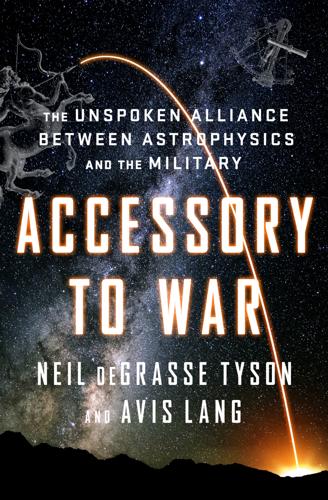
Accessory to War: The Unspoken Alliance Between Astrophysics and the Military
by
Neil Degrasse Tyson
and
Avis Lang
Published 10 Sep 2018
In 2012 it was $27.5 billion—half again as much as NASA’s budget; in 2015 it was $23.6 billion—a third more. Far and away the world’s most lavish military spender overall, the United States is also the most lavish spender on military space. In 2008 America shelled out almost ten times as much as the rest of the world combined. And that doesn’t include spending on dual-use technology, which includes anything that can, with equal aplomb, carry out a nonmilitary task today and a military task tomorrow.7 By 2016, America’s military-space spending had fallen to twice that of all other countries combined. American spending dominance may level off further as other countries establish a stronger space presence, a recalibration likely to reverberate through international politics and investment.
…
Its approach had the flavor of 1950s-style McCarthyism. Johnson-Freese calls the Cox Committee’s efforts “melodramatic,” “sensational,” “technically challenged and politically trumped-up.” “Seemingly overnight,” she writes, communication satellites “were described as threats to U.S. national security,” and “as dual-use technology, [they] became subject to the same government controls as military satellites, tanks, or guns, for purposes of sale overseas.” No longer was civilian space technology impressive, multipurpose engineering. Now it was potential armaments, subject to AECA, the Arms Export Control Act; USML, the US Munitions List, and its definitions of sensitive US technology; COCOM, the Coordinating Committee on Multilateral Export Controls; the Wassenaar Arrangement on Export Controls for Conventional Weapons and Dual-Use Goods and Technologies; and especially to ITAR, the International Traffic in Arms Regulations, which, when broadly implemented, thwarted the free exchange of scientific and technological ideas in the name of national security.

Test Gods: Virgin Galactic and the Making of a Modern Astronaut
by
Nicholas Schmidle
Published 3 May 2021
“The flow of sophisticated weapons into areas of possible conflict, without tighter provisions for scrutiny and oversight by Congress, has had the effect of piling up tinder for future conflagrations,” said one senator. “Weapons sales are too important to be left in the hands of salesmen.” The International Traffic in Arms Regulations legislation, known by its initials, ITAR, prohibited the transfer of “dual-use” technologies, like rockets, to foreigners—or even sharing information with them. Most of Virgin’s employees were not US citizens. “That set the tone between us and Virgin,” said Brian Binnie, the SpaceShipOne pilot. Binnie had stayed on at Scaled. He was deeply involved with the early days of the SpaceShipTwo program.

Digital Empires: The Global Battle to Regulate Technology
by
Anu Bradford
Published 25 Sep 2023
The Huawei controversy has ignited a broader conversation in Europe about the need to protect strategic technology assets from foreign acquirers, resulting in a more careful screening of foreign direct investment in such technologies.172 The EU has also moved to combat unfair foreign subsidies, including the Chinese government’s practice of funding Chinese companies’ acquisitions of EU companies or their bids for government contracts in the EU.173 It has further strengthened its export control regime, restricting the outflow of dual-use technologies, including cybersurveillance tools, advanced computing, and AI,174 and adopted new laws aimed at enhancing Europe’s cyber resilience and cyber defenses.175 Recently, the EU has introduced actual sanctions in response to cyberattacks orchestrated by China, North Korea, and Russia.176 European governments are also resorting to new industrial policy measures, including the granting of government subsidies—a practice commonly associated with the Chinese state-driven regulatory model.
…
The Chinese government consolidated its previously diffuse export control review process into a single legislative framework under the Export Control Law (ECL), which entered into effect in 2020.106 The new law applies to “controlled items” such as military products, nuclear-related items, and dual-use technologies.107 China has also emulated the US government’s Entity List approach to export controls.108 After the Trump administration announced that it was adding Huawei to the US Entity List, China’s Ministry of Commerce (MOFCOM) announced its intention to create a similar list—known as the Unreliable Entities List (UEL)—in May 2019.

Reset
by
Ronald J. Deibert
Published 14 Aug 2020
Surveillance and human rights: Report of the Special Rapporteur on the Promotion and Protection of the Right to Freedom of Opinion and Expression. Retrieved from https://digitallibrary.un.org/record/3814512; See also Penney, J., McKune, S., Gill, L., & Deibert, R. J. (2018). Advancing Human-Rights-by-Design in the Dual-Use Technology Industry. Journal of International Affairs, 71(2), 103-110. States purchasing spyware are at liberty to abuse it: Anstis, S., Deibert, R. J., & Scott-Railton, J. (2019, July 19). A proposed response to the commercial surveillance emergency. Retrieved from https://www.lawfareblog.com/proposed-response-commercial-surveillance-emergency Government military, intelligence, and law enforcement agencies have … stockpiled knowledge of software bugs: Deibert, R. (2014, November 25).

CRISPR People: The Science and Ethics of Editing Humans
by
Henry T. Greely
Published 22 Jan 2021
It is not even new in discussions of the He affair: an editorial in Science magazine by the presidents of three national academies called for “an international mechanism that would enable scientists to raise concerns about cases of research that are not conforming to the accepted principles or standards.”7 This question has arisen before in the biosciences with respect to so-called dual-use technologies, those that could be used for good purposes or for evil ones, such as biological warfare. It also comes up in more routine situations where someone is aware of wrongdoing and we as a society want to encourage or protect their whistleblowing. Qui tam statutes, giving whistleblowers some of the proceeds of suits against wrongdoers, date at least as far back as the Civil War.
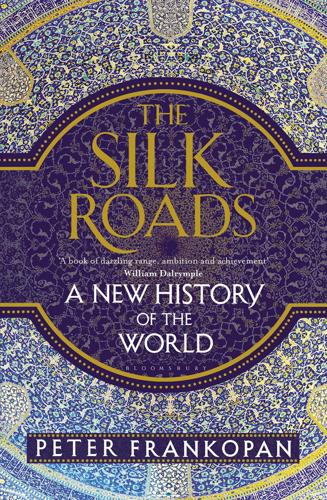
The Silk Roads: A New History of the World
by
Peter Frankopan
Published 26 Aug 2015
Helping Saddam was a way of remaining engaged, as well as countering the advance of both Iran and the Soviet Union. Support took several forms. After removing Iraq from the list of state sponsors of terrorism, the US acted to help prop up the economy, extending financial credit to support the agricultural sector and allowing Saddam to buy first non-military equipment and then ‘dual-use’ technology, such as heavy trucks that could be used to transport equipment to the front lines. Western governments in Europe were encouraged to sell weapons to Baghdad, while US diplomats worked flat out to convince other regional powers, such as Kuwait and Saudi Arabia, to help finance Iraq’s military expenditure.
…
It was a shame, one intelligence document written in the spring of 1985 stated, that given ‘Iran’s historic, geostrategic importance’ relations between Washington and Teheran were so poor.117 Indeed, a year earlier, Iran had been officially designated a ‘State Sponsor of Terrorism’, which meant that there was a blanket ban on arms-related exports and sales, strict controls of dual-use technology and equipment, and a raft of financial and economic restrictions. It was unfortunate indeed, noted another report written around the same time, that the US had ‘no cards to play’ in its dealings with Iran; perhaps it was worth considering a ‘bolder – and perhaps riskier policy’, suggested the author.118 There was much to gain – for both sides.

System Error: Where Big Tech Went Wrong and How We Can Reboot
by
Rob Reich
,
Mehran Sahami
and
Jeremy M. Weinstein
Published 6 Sep 2021
(Hashemi and Hall), 250 CrunchBase, 41 customer support using AI, 163 Dantzig, George, 11 DARPA Grand Challenge(s), 153–54 data minimization, 134 data mining overview, 84–87, 114, 115–20 biometric recognition and GPS tracking throughout the day, 123 private companies, 116–19, 151 by public institutions, 140–42, 151 random “noise” in data, 131–32 US government, 115–16, 117, 119–20 Users’ data pods vs., 149–50 data portability, 255–56 Data Privacy Lab, Harvard University, 130–31 data protection, 136, 140–45, 255 data security, 134 Deaton, Angus, 170 “Declaration of the Independence of Cyberspace” (Barlow), 25, 52 deep learning, 161–64, 236 Defense Advanced Research Projects Agency (DARPA), 153–54 deficiency of efficiency, 15–17 Demand Progress, xxiii “Demo Day” at Y Combinator, 44–45 democracies rising to the challenge, 233–64 overview, 263–64 balancing the competing values created by innovation, 240–43, 258 delivering regulatory framework and tech policies, 260 humans’ relationship to technology, 237–39 systemic problems, 239–43 See also creating an alternative future democracy arguments for, 69–72 for avoiding really bad outcomes, 75–76 balancing competing values, 258 and economic growth, 71 free flow of ideas and debate, 70–71 guardrails approach to, xxxii, 73–76, 219 negative aspects, 73–76 protecting the integrity of the democratic process, 225 requirements for success, 200 resolving trade-offs between rival values, xxxii–xxxiii rule by experts vs., 66–68 in Taiwan, 242–43 and tech companies’ market and political power, 63 See also winner-take-all, disruption vs. democracy differential privacy, 130–33 Digital Equipment Corporation, 35 Digital Millennium Copyright Act, 225 digital panopticon, 113–14, 121–26 digital trustmediary, 149 dignity, 13, 190–1, 198–202, 208, 209 DiResta, Renee, 218 disinformation, xii, xiii, xxviii, 40, 188, 190, 195, 199, 200, 203, 205–7, 214, 222, 225–6, 237. See also misinformation disruption and innovation, xiv. See also winner-take-all, disruption vs. democracy Doerr, John, 26–27, 31–33, 41 DoNotPay, xix–xx Dorsey, Jack, 39–40, 187, 254. See also Twitter dot-com crash, 27 dual-use technology, 16 DuckDuckGo, 135–36 due process for algorithmic decisions, 106–7 Dwork, Cynthia, 130–31 dystopian social control, 121–23 economists, increasing power of, 10 efficiency, deficiency of, 15–17. See also optimization mindset Einstein, Albert, 77 election fraud alleged in 2020 presidential election, xi Electronic Frontier Foundation (EFF), 119–20 Electronic Privacy Information Center (EPIC), 150 Emanuel, Ezekiel J., 243 encryption, xv, 13, 72, 116, 127–29, 134 Encyclopaedia Britannica, 195 “End of Food, The,” Soylent reported to be, 9 engineers, 6, 10–15, 28–30, 31–33 environment vs. factory farms, 20–21 epistocracy, democracy vs., 66–68 ethics and AI, 165–66 ethics and politics of technological change, xvi–xvii, xx–xxi, xxiii European Commission, 136 European Data Protection Authorities, 145 European model of capitalism, 181 European Union antitrust actions against Google, 228–29 GDPR data protection, 142–45, 147, 238, 241 social safety nets, 185–86 Vestager’s roadblocks to big tech, 252–53, 255 Everyday Sexism Project, 220 expert rulers’ incentive to maintain their status, 68 externalities, xxvi, 48, 73, 200, 260 extremists right to use hate speech in the US, 189–90 FAccT/ML (Fairness, Accountability, and Transparency in Machine Learning), 89 Facebook acquisition of Instagram, 229 business model, xxvii, 18–19 Cambridge Analytica scandal, 37, 128, 146–47, 254 Christchurch, New Zealand, terrorist attack livestreamed, viral, removed, 189 data mining, 118–19 DeepFace system, 161, 162 deleting derogatory statements about men, 188 as digital civic square, 21 and end-to-end encryption, 127–28 FTC complaints against, 150, 253 global audience for truth or lies, 192–93 lawsuit for using facial recognition tech, 46–47 market dominance of, 227 Oversight Board of Facebook, 213–16 plan to comply with GDPR, 145 population of users nearly double that of China, 188–89 #StopProfitForHate campaign vs., 224–25 study of privacy settings, 137 Terms of Service excerpt, 118–19 Zuckerberg appears before House committee, 64–65 See also big tech platforms facial recognition aerial surveillance systems, 112 deep learning, 161–62 downstream applications, 17 Facebook sued for using, 46–47 human supervision requirement, 85 loss of liberties in a democratic society, 125 modern revival of physiognomy, 249 paradox, 113–15 prioritizing optimization vs., 15, 17 protecting celebrities from stalkers, 111–12 women and dark-skinned people, 113 factory farming as a success disaster, 20–21 Factory Investigating Commission, New York, 55 fairness, xxxiii, 20, 73, 88–94, 97, 99, 101, 103, 104, 106–8, 166, 237 Family Educational Rights and Privacy Act (FERPA), 140 famines as man-made political disasters, 74 Federal Bureau of Investigation (FBI), 128–29, 134–35 Federal Communications Commission (FCC), 58, 228 Federal Constitutional Court of Germany, 143 Federal Trade Commission (FTC), 118, 150–51, 228, 253 financial sector, 163–64, 254–55 First Amendment of the Constitution of the United States, 189, 191–92, 214, 216, 217 Flexner, Abraham, 244–45 Floyd, George, murder of, 69 Foot, Philippa, 155 Ford Pinto’s design flaw, 36–37 Foster, Bill, 52 Foucault, Michel, 122–23 free speech and the internet, 187–230 overview, 187–91 beyond self-regulation, 216–21 Christchurch, New Zealand, terrorist attack livestreamed, 189 collision of free speech with democracy and dignity, 198–202 creating a more competitive marketplace, 227–30 exceptions to free speech, 217 foreign interests with election-related advertising as an exception, 225 the future of platform immunity, 221–26 hate speech, 187–91, 200–201, 218 online efforts to regulate speech, 219–21 speech and its consequences, 191–97 Twitter’s suspension of Trump, xi-xii, 187–88 See also creating an alternative future freedom of expression, 198–99 Furman, Jason, 184 Galetti, Beth, 79–80, 99 Gates, Bill, 183 Gebru, Timnit, 112–13, 250 gender bias in recruiting system, 81–82, 83, 100–1 General Data Protection Regulation (GDPR), 142–45, 147, 149, 238, 241, 255 Germany, 143, 217–18 Gibbons, Jack, 258 gig economy workers, 47–49 Gillibrand, Kirsten, 151 Gingrich, Newt, 259 Glickman, Aaron, 243 Go, AI playing, 157 goals, of algorithmic models, 15–16, 18–21, 34–37 “Goals Gone Wild” (Ordóñez), 34–37 Gonzalez, Lorena, 48, 95 Goodhart’s Law, 19 Goodrow, Cristos, 33–34 Google AI ethics board dissolved, 166 data mining, 117 differential privacy technology used by, 131–32 employees protest sale of AI tech, 17 engineers actively unionizing, 180 European Commission lawsuit against, 136 Founders’ Award, 28 Gebru, firing of, 250 Google Buzz launch, 120 management by OKRs, 32–33 market dominance of, 227, 228 OpenSocial specification, 256 partnership with Apple, 113, 141 Pichai appears before House committee, 64–65 state attorneys general filing suit against, 253 Google Buzz, 120 Gore, Al, 59–60 governance, 66–68, 69–72, 105–7, 263–64 government AI-related taxes on businesses, 182–84 Clipper Chip technology, 115–16 companies helping to manage consequences of AI, 184 creating an agency responsible for citizen privacy rights, 150–51 data collection by public institutions, 140–42, 151 developing a new relationship with tech sector, 241 legitimacy of, 68 reasons for involvement in free speech on the internet, 221–26 tax-related subsidies for businesses, 179 See also regulations GPT-2 and GPT-3, OpenAI’s language models, 233–37 greedy algorithms, 12–13 Greenspan, Alan, 61 gross domestic product (GDP), 173 Group Insurance Commission (GIC) of Massachusetts, 130 Grove, Andy, 51 “Guerrilla Open Access Manifesto,” xxii–xxiii Hacker News website, 8 hackers computer scientists as, 21–22 Hacker News, 8 influencing political arena, 46 iPhones’ back door as a challenge to, 135 life hacking website, 14 marriage of capitalists and, 28, 52, 68 Hall, Margeret, 250 happiness in life, importance of, 167, 168 Harvard University Data Privacy Lab, 130–31 Hashemi, Madhi, 250 Hastings, Reed, 5–6 hate speech, 187–91, 200–201, 218, 224–25 Hawley, Josh, 223 Health Insurance Portability and Accountability Act of 1996 (HIPAA), 129, 140, 246 hedge funds using AI, 163–64 Hertzberg, Robert, 95 High Bar for Talent, Amazon’s, 79–80 High Performance Computing and Communications Act (1991), 59–60 Hinton, Geoff, 164 Hoffman, Reid, xxviii, 39, 51–52 Holmes, Elizabeth, xxx Holt, Rush, 52 Hong Kong protests in 2019, 125 Hooked on Phonics, 150 Horowitz, Ben, 42 Houghton, Amo, 259 Human Development Index (HDI), 173 human intelligence compared to machine intelligence, 158–59.
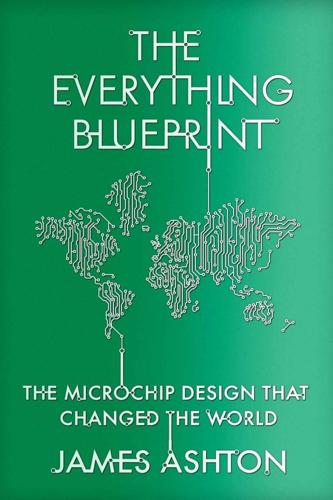
The Everything Blueprint: The Microchip Design That Changed the World
by
James Ashton
Published 11 May 2023
In 2018, ASML had been granted a licence by the Dutch government to sell its most advanced machine to a Chinese customer, but that summer the Dutch prime minister Mark Rutte was reportedly handed an intelligence report on the potential repercussions from the sale while on a visit to the White House. The US also had recourse to the Wassenaar Arrangement, a successor to the Cold War club that co-ordinated between 42 participating states export restrictions of so-called ‘dual-use’ technology that may have military as well as commercial uses. Soon after the report was handed over, the Dutch licence was revoked and ASML’s delivery, thought to have been to SMIC, was not made.32 The hope of Eric Meurice, ASML’s fund-raising chief executive who had retired in 2013, to make its technology available ‘to every semiconductor manufacturer with no restrictions’ proved to be wishful thinking.

The Wars of Afghanistan
by
Peter Tomsen
Published 30 May 2011
Days after the invasion, his naïveté inadvertently surfaced in an unusual acknowledgment to the press that would return to haunt him on the campaign trail: “My opinion of the Russians has changed most dramatically in the last week, more than even in the previous two and a half years before that.”21 Presidential candidate Reagan’s declaration in a New York speech, “I don’t agree that our nation must resign itself to inevitable decline, yielding its proud position to other hands,”22 suggested to voters that he would be more resolute in standing up to the Soviets. Carter levied twenty-six sanctions against the Soviet Union. They included an Olympics boycott, a grain embargo, withdrawal of the SALT II treaty from the Senate, cessation of dual-use technology sales, fishing restrictions in American waters, and closure of the Soviet consulate in New York and the American consulate in Kiev. The administration’s new “Carter Doctrine” warned the Soviet Union that any attempt to control the Persian Gulf would be repelled “by any means necessary, including military force.”23 Carter’s harder line did not affect Soviet behavior.
…
Bradsher, Afghan Communism and Soviet Intervention (Karachi: Oxford University Press, 2000), 104. In order to maintain balance with India, the Reagan administration permitted New Delhi to manufacture the GE-404 aircraft engine used in American F-14 combat fighters. An Indo-American technology agreement was signed, opening the way for India to acquire a range of previously denied dual-use technology items. 27 “Andropov Gromyko Ustinov Ponomarev Report on Events in Afghanistan on 27—28 December 1979,” Central Committee, Communist Party of the Soviet Union, top secret, online at Cold War International History Project, Virtual Archive, www.wilsoncenter.org. 28 Ibid. 29 Ibid. 30 Bruce J.
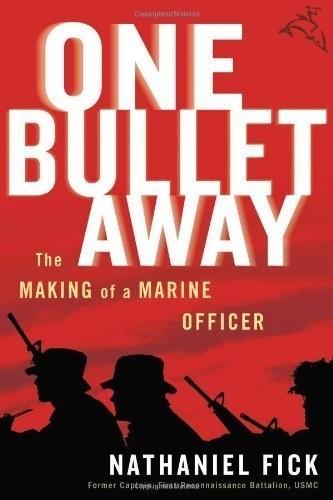
One Bullet Away: The Making of a Marine Officer by Fick, Nathaniel C.(October 3, 2005) Hardcover
by
Nathaniel C. Fick
Published 14 Apr 2006
Most of the writing was in Cyrillic. They thought we’d struck a jackpot until they began opening the cabinets and drawers. Baking trays, mixing bowls, and measuring spoons fell out. Our mobile weapons lab was a field kitchen for the Iraqi army. We laughed about it, but there was an underlying lesson. The illusions of “dual-use” technology are deceptive, and sometimes a satellite is no substitute for a team of Marines with bolt cutters. Just before sunset, Charlie Company roared past, waving the captured standard of the Republican Guard armored brigade from the window of their lead Humvee. We cheered as if the whole day of combat had been a game of capture the flag.

Surveillance Valley: The Rise of the Military-Digital Complex
by
Yasha Levine
Published 6 Feb 2018
See databases data collection and mining AOL search logs revealing personal identity, 156–157 ARPA’s Southeast Asia programs, 52–53 Brin’s interest in, 148 Cambridge Project, 68–69 early tabulation technology, 55–56 Google and Gmail, 157–159 Google as government contractor, 173–178 Google search engine algorithm, 149–150 Google’s expansion into multiple markets, 171–173 Google’s penetration into civil society, 179–181 NSA PRISM program, 192–193 predictive modeling using search engine data, 160–161 search engine development, 151–152 secrecy over user search data, 153–156 US Army database, 79–80 data sharing: Oakland’s Domain Awareness Center, 2 databases American Airlines SABRE, 82 congressional hearings on domestic surveillance, 84–87, 90–93 digitizing data, 80–84 death threats, 211–212, 216 Deep Web (documentary), 209 Defense Communication Agency, 93 defoliants, 13–15 democracy promotion, 251 Democratic National Convention, 265 Department of Homeland Security (DHS): Silk Road, 261–262 Dingledine, Roger, 202, 214, 225–227, 229–230, 236–241, 245–247, 251, 253, 258, 263 Diplomatic Security, 182 Doctorow, Cory, 258 Domain Awareness Center (DAC), 1–5 domestic surveillance and counterinsurgency bringing military technology to, 75–80 Ford Rowan’s exposé, 73–75, 87–90 growth of corporate and government databases, 82–84 Sam Ervin’s congressional hearings, 84–87 Tunney’s congressional investigation of ARPA, 90–93 Dow Chemical, 69 Dread Pirate Roberts, 201–204, 260–262 Silk Road, 205 The Dream Machine (Waldrop), 51 drones, 52 drug use: Vietnam War, 31–32 dual use technology, 57–59 Dugan, Regina, 180–181 Duo app, 258 “dynamations,” 47–48 early warning systems, 37–38, 67, 189–190 Earth Day festival, 78 eBay, 169–170, 180 economics: importance of cybernetics, 45 eco-technics, 110 Ecuador, 221 education “dynamations,” 47–48 Google penetration into public schools, 179 Edwards, Douglas, 141–142, 153–154 EGOTISTICAL GIRAFFE, 265 Egypt: Arab Spring, 248 Eisenhower, Dwight, 16–17 elections: data-driven campaigning, 65 Electric Word magazine, 129 electronic fence technology, 27 Electronic Frontier Foundation (EFF) Signal, 258 Tor, Assange, and WikiLeaks, 245 Tor Project funding, 212–213, 227–228 Wired magazine connection, 136 Electronic Privacy Information Center, 162 Ellsberg, Daniel, 209 email, 157–164 encryption: Moxie Marlinspike and Signal, 257 Engelbart, Douglas C., 50, 112, 145 ENIAC computer, 39–41, 117 Erskine, Graves, 19–20 Ervin, Sam, 84–88 Ethical Tor Research guide, 263–264 face recognition: Oakland’s Domain Awareness Center, 1–2 Facebook, 170, 180–181, 194–195, 209, 258 Falun Gong, 235 The Family, 110–111 Federal Bureau of Investigation (FBI) building a database, 80–81 exposé on domestic surveillance, 89 NSA PRISM program, 192–193 Silk Road, 203, 261–262 Federal Communications Commission (FCC), 135 Ferguson, Richard, 89–90 Fight for the Future, 258 Figueroa, Liz, 162–164 First Lighting, 37–38 foreign policy, US BBG’s Russian Deployment Plan, 237–238 fighting Internet censorship, 234–236 The Fountainhead (Rand), 239–240 Fowler, Donnie, 167–168 France: US clandestine ops in Vietnam, 19–20 fraud, Project Agile as, 32–33 Freedom of Information Act, 223 Gaddafi, Muammar, 248 Gellman, Barton, 199 Geneva Conventions, 15 gentrification: San Francisco and Oakland, 2–4 GeoEye-I satellite, 181 Gibson, Randall, 110, 115 Gilder, George, 102, 135 Gingrich, Newt, 135 Gmail, 157–164, 179–180 Godel, William, 13–15, 18–22, 27–33, 51–53, 145 Golumbia, David, 45 Google as government contractor, 173–178 buying companies and start-ups, 169–173 civilian, military and intelligence penetration, 178–182 early users, 143 equating with government, 182–184 Gmail, 157–164 JigSaw, 181–183 Keyhole Incorporated takeover, 175 Lockheed Martin partnership, 176–177 National Geospatial-Intelligence Agency partnership, 177–179 NSA PRISM program, 194–195 Oakland’s Domain Awareness Center and, 4–5 predictive policing, 167–168 predictive system, 161 public stock offering, 164–165 search engine, 149–150 search engine development, 151–152 secrecy over user search data, 153–155, 157 September 11, 2001, 139–141 Signal encryption, 258, 265 Snowden and, 208–209 tailoring searching through profiling, 150 targeted advertising system, 5 Google Earth, 173–176 Google Federal, 176, 178–179 Gore, Al, 102, 164 Great Firewall of China, 235, 256 Great Intergalactic Network, 59–61 Greenberg, Andy, 245, 258 guerrilla activity: US clandestine ops in Vietnam, 19–20 hacker community defense origins of the Tor Project, 225–226 hacking Tor, 263–265 Jacob Appelbaum’s history, 239–242 Tor Project, 220–222 working for the government, 225–226 Hackers’ Conference, 115–116 Hafner, Katie, 60 Halliday, John T., 26 Hamburg, Germany, 219–222 Hanke, John, 174 Hard Landing (Petzinger), 82 Harrison, Sarah, 220 Harvard University, 62–64 HavenCo, 220 Hayden, Michael, 199–200 Heidinger, Willy, 56–57 Herzfeld, Charles, 47 Hess, Karl III, 128–129 Hitler, Adolf, 43, 56–57, 272 Hollerith, Herman, 54–56 Honduras, 129–130 Hoofnagle, Chris, 161, 164–165 Hoover, J.

The Future Is Asian
by
Parag Khanna
Published 5 Feb 2019
In 2017, Narendra Modi became the first Indian prime minister to visit Israel, a public recognition of Israel being India’s third largest arms supplier, with cooperation deepening across critical areas such as cybersecurity and missile defense, as well as crucial economic priorities such as agrotechnology and water recycling, both areas in which Israel excels.4 Israel is home to nearly 90,000 Jews of Indian origin, and the country’s new talent visa, meant to fast-track foreign engineers into the tech sector, is targeting a new generation of Indians. In 2017, Netanyahu traveled to India for six days, bringing a delegation of 130 officials and business leaders. Israel has also set its sights on increasing its exports to China, even at the risk of providing sensitive dual-use technologies codeveloped with the United States. Not only has this arrangement caused friction with the US Department of Defense, but China may be passing such technologies onward to Iran, which may use them against Israel. Such a feedback loop is a telltale sign that countries coexist in a common regional security complex—even if they don’t appreciate it.

Second World: Empires and Influence in the New Global Order
by
Parag Khanna
Published 4 Mar 2008
Each country has actively sought ways to add value to the other’s products, for example smoothing Brazilian companies’ purchase of textile factories in China in order to share profits. Among such key second-world players, technical exchange is also flourishing outside of Western corporate ownership demands and political concerns over dual-use technologies, with Brazil, for example, sourcing equipment for natural gas extraction from Russia. If Venezuela is forging a second-world energy axis, then Brazil is captain of a second-world trade axis. Brazilian culture is what happens when both mind and body are in a good mood. Unlike in third-world countries where waterfront real estate is often privately owned, there is a sacred equality to beach access along the entire coast, where Brazilians indulge in natural sports of the body such as soccer and volleyball—in contrast to the U.S. preference for sports of body armor like football and NASCAR.

Active Measures: The Secret History of Disinformation and Political Warfare
by
Thomas Rid
Online sharing services, especially those with built-in anonymity, were tailor-made for at-scale deception. Dirty tricksters could now reach their target audiences directly. Cryptome, a radical transparency site and in effect the world’s first leak portal, was created in 1996 by the married couple John Young and Deborah Natsios to call attention to dual-use technology. Young had been active on the cypherpunk list, a loose group of technology utopians with an antigovernment, anarchist bent. From West Texas, son of an oil worker, he became an architect in Manhattan and lived on the Upper West Side. Yet for decades, Young operated Cryptome on the tiny budget of less than $2,000 per year.1 His vision was rather romantic: “Cryptome, aspiring to be a free public library, accepts that libraries are chock full of contaminated material, hoaxes, forgeries, propaganda,”2 Young told one interviewer in 2013.

Spies, Lies, and Algorithms: The History and Future of American Intelligence
by
Amy B. Zegart
Published 6 Nov 2021
In the twentieth century, economics and security politics were separate spheres because the Soviet-bloc command economies were never part of the global trading order. In the twenty-first century, economics and security politics have become tightly intertwined because of global supply chains and dramatic advances in dual-use technologies like AI that offer game-changing commercial and military applications. Until now, intelligence agencies focused on understanding foreign governments and terrorist groups. Today they also have to understand American tech giants and startups—and how malign actors can use our own inventions against us.
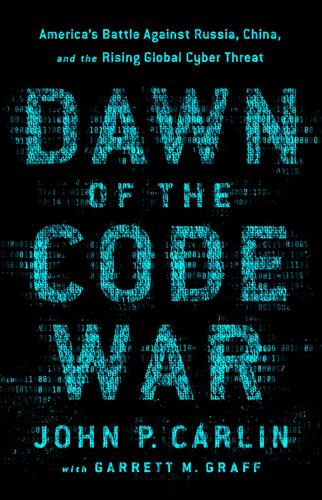
Dawn of the Code War: America's Battle Against Russia, China, and the Rising Global Cyber Threat
by
John P. Carlin
and
Garrett M. Graff
Published 15 Oct 2018
One of the biggest counterproliferation cases we worked was the years-long pursuit of a merchant named Hsien Tai Tsai, or Alex Tsai, and his Taiwanese companies, Trans Merits and Global Interface. It was a multigenerational family scheme, which also included his wife and his son, Gary Tsai, that saw them attempt to export key dual-use technologies from the United States to Taiwan, falsely declaring that the final user would be Trans Merits when they really intended to move the technology on to North Korea. Alex Tsai had been involved in such export schemes since the 1990s and had been indicted in Taiwan in 2008 for “illegally forging invoices and shipping restricted materials to North Korea.”
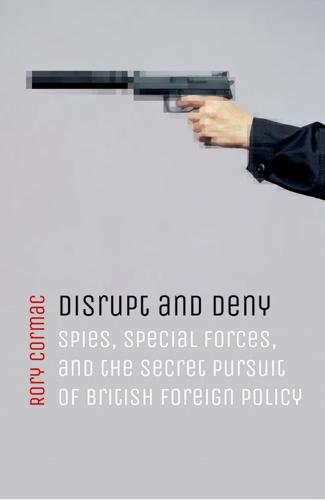
Disrupt and Deny: Spies, Special Forces, and the Secret Pursuit of British Foreign Policy
by
Rory Cormac
Published 14 Jun 2018
There was less need given that British arms exporters were already closely associated with the establishment.52 SIS operations classically involved allowing authentic private businessmen to enter into relationships with hostile countries, before penetrating their networks to gain intelligence.53 At the same time as facilitating arms sales to Tehran, Britain covertly helped arm Iran’s opponent in its war with Iraq. SIS, with the blessing of policymakers, encouraged the export of dual-use technologies to Baghdad (i.e. items that individually were harmless but could become lethal when linked with o thers), despite likely knowing their ultimate military 54 The aim was to keep open channels of information on Iraqi arms purpose. requirements provided by an SIS source inside the firm supplying the technology, Matrix Churchill.55 This may have been the tip of a deep and murky iceberg bringing together arms exporters, government, and intelligence.
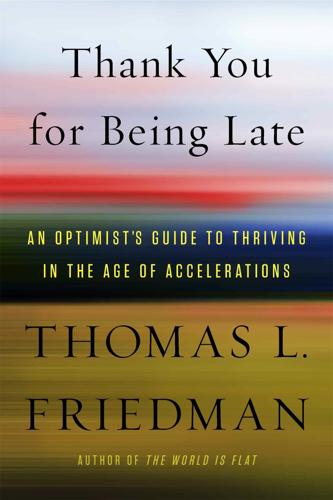
Thank You for Being Late: An Optimist's Guide to Thriving in the Age of Accelerations
by
Thomas L. Friedman
Published 22 Nov 2016
The most popular method, CRISPR, has been revolutionizing scientific research, leading to novel animals and crops, and is likely to power a new generation of gene treatments for serious diseases. It is gene editing’s relative ease of use that worries the U.S. intelligence community, according to the assessment.” Clapper’s report said: “Given the broad distribution, low cost, and accelerated pace of development of this dual-use technology, its deliberate or unintentional misuse might lead to far-reaching economic and national security implications.” No Known Home Address It is not just the fact that individual breakers can now do more damage more cheaply and more easily that is so unnerving. It’s that they no longer need a traditional organization to arm or direct them—an organization that can be tracked and destroyed by police or armies.

Valley of Genius: The Uncensored History of Silicon Valley (As Told by the Hackers, Founders, and Freaks Who Made It Boom)
by
Adam Fisher
Published 9 Jul 2018
The thought was that if people could make recordings of television programs in their home, then “Oh my gosh, that’s it, we’re done!” And so the studios sued Sony, and it took seven years actually, but it went up to the Supreme Court. The decision there was, “Yes, this particular technology can be used to infringe copyright, there’s no question about it. It also has a lot of beneficial uses, and when we’re facing these dual-use technologies, we’re going to err on the side of protecting the new technology.” In the Betamax case they found that Sony was not liable for contributory infringement by manufacturing VCRs that had Record buttons on them. That was really the fundamental theory of why Napster was not liable for contributory infringement.

This Is How They Tell Me the World Ends: The Cyberweapons Arms Race
by
Nicole Perlroth
Published 9 Feb 2021
Named for the Dutch town where the arrangement was originally signed in 1996, the Wassenaar Arrangement on Export Controls for Conventional Arms and Dual-Use Goods and Technologies was designed to replace the previous set of Cold War norms used by Western states to keep weapons and military technology from making their way to Russia, China, and their communist satellites. Wassenaar’s goal was to control the sale of conventional weapons systems and dual-use technologies—sophisticated computers, centrifuges, drones—from reaching despots in Iran, Iraq, Libya, and North Korea. Its original signatories included the United States and forty-one other countries, including most of Europe, Argentina, Australia, Canada, India, Japan, Mexico, New Zealand, Russia, South Africa, South Korea, Switzerland, Turkey, Ukraine, and the United Kingdom, and though the arrangement is nonbinding, member-states agree to establish and enforce their own domestic laws to control the sale of items on Wassenaar’s control list, which they update every December.

Free Speech: Ten Principles for a Connected World
by
Timothy Garton Ash
Published 23 May 2016
All these companies have legal and PR departments which will send you long emails or letters (as SiemensNokia did to me on one occasion) explaining how the story was not exactly as reported and the products are no different from those they supply to Western networks.43 But while these often are ‘dual use’ technologies, deployed for less oppressive purposes in democracies, the companies know perfectly well the kind of regimes they are dealing with. Selling a sharp knife to a fisherman is not the same as selling a sharp knife to a murderer. After the first popular rising of the Arab Spring took place in Tunisia, the head of the country’s Internet Agency revealed that, under the ancien régime of Zine el Abidine Ben Ali, several Western companies had used the agency as a testing ground for internet censorship technologies which they might then sell to other friendly dictators.44 When the Arab Spring came to Egypt, protesters found documents showing how the British-based Gamma Group had offered to sell a spyware programme called FinFisher to the military security state of Hosni Mubarak.

Four Battlegrounds
by
Paul Scharre
Published 18 Jan 2023
And the U.S. government is taking action to ensure that when U.S.-China tech cooperation occurs, it does so on a level playing field, not one where China engages in rampant espionage and intellectual property theft. In 2018, the Commerce Department Bureau of Industry and Security requested public comment on possible export controls for a range of dual-use technologies, including AI and machine learning. In 2020, the Commerce Department tightened export controls around businesses linked to the Chinese military, and the Defense Department began publishing a list of PLA-affiliated companies. These efforts were an attempt to drive a wedge between military-civil fusion, or at least ensure U.S. businesses aren’t actively facilitating it.
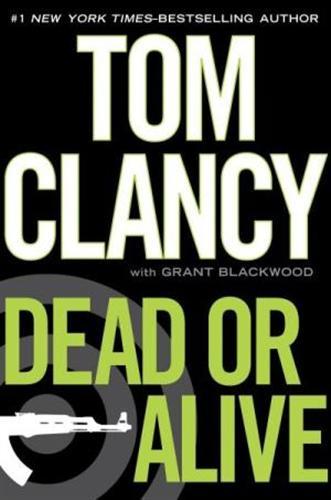
Dead or Alive
by
Tom Clancy
and
Grant (CON) Blackwood
Published 7 Dec 2010
Like the tent itself, which had been manufactured in Malaysia based on specifications stolen from the online curriculum for Fort Leonard Wood’s Operational Radiation Safety (OPRAD) course, the component parts had been laser-milled and lathed in Morocco-based Ukrainian schematics. The beauty of simplicity, Musa thought. Each of the device’s components was born either from benign dual-use technology or from plans that had long ago been discontinued, considered obsolete according to modern standards. The component he and his team had recovered existed only because of what most environmental groups considered Russia’s lax attitude toward nuclear material, but Musa knew that was only part of the equation, the others being the Russian government’s love affair with innovative nuclear-power programs and its tendency toward circumspection when it came to telling the world about those programs.

The Great War for Civilisation: The Conquest of the Middle East
by
Robert Fisk
Published 2 Jan 2005
Now we were being told—if Blair was telling us the truth—that the price was not worth it. The purchase bought with the lives of hundreds of thousands of children wasn’t worth a dime. For the Blair “dossier” was telling us that, despite sanctions, Saddam was able to go on building weapons of mass destruction. All that nonsense about dual-use technology, the ban on children’s pencils—graphite could have a military use—and our refusal to allow Iraq to import equipment to restore the water-treatment plants that we bombed in the Gulf War, was a sham. This grievous conclusion was the only moral one to be drawn from the sixteen pages that supposedly detailed the chemical, biological and nuclear horrors that the Beast of Baghdad had in store for us.

Artificial Intelligence: A Modern Approach
by
Stuart Russell
and
Peter Norvig
Published 14 Jul 2019
These considerations—particularly those characteristics that advantage the attacker—suggest that autonomous weapons will reduce global and national security for all parties. The rational response for governments seems to be to engage in arms control discussions rather than an arms race. The process of designing a treaty is not without its difficulties, however. AI is a dual use technology: AI technologies that have peaceful applications such as flight control, visual tracking, mapping, navigation, and multiagent planning, can easily be applied to military purposes. It is easy to turn an autonomous quadcopter into a weapon simply by attaching an explosive and commanding it to seek out a target.